How Much Fuel Does a 50 Ft Boat Use? Uncovering the Truth
Owning a boat can be a dream come true for many, offering the opportunity to explore the open seas, enjoy water sports, or simply escape the hustle and bustle of everyday life. One essential detail when operating a boat, however, is knowing how much fuel it consumes. For those considering a 50-foot boat, understanding its fuel usage is crucial for proper planning and cost management. This comprehensive blog post will delve deep into the topic, discussing a variety of aspects relevant to fuel consumption in 50-foot boats, the factors affecting it, and methods to optimize it. Strap on your life vests, and let’s dive in!
Table of Contents

Fuel Consumption Basics
Before we dive into the details of a 50-foot boat’s fuel consumption, it’s essential to understand some basics about boat fuel consumption in general. Fuel consumption is typically measured in gallons per hour (GPH) or liters per hour (LPH), depending on the region.
Types of Boat Engines
Choice of boat engine is an important factor when considering fuel consumption. There are two main types of boat engines – inboard and outboard. Inboard engines are situated within the hull, while outboard engines are mounted outside the hull at the stern of the boat. Commonly, large boats, like a 50-foot boat, utilize inboard engines. It’s also worth noting that engines can either run on diesel or gasoline, with each having its own fuel consumption characteristics.
Average Fuel Consumption for a 50-Foot Boat
A boat’s fuel consumption depends on various factors, including engine type, speed, vessel size, and design. As a result, it’s difficult to generalize fuel consumption for all 50-foot boats. However, to provide an estimated range, we can assume the following average fuel consumption rates for 50-foot boats under varying conditions:
- 3-5 GPH at idle speed
- 10-25 GPH at cruising speed (typically around 20-30 knots)
- 20-60 GPH at high speeds (over 30 knots)
These are general estimates, and it’s crucial to consult your boat’s engine specifications and manuals for accurate information on your specific model.
Factors Affecting Fuel Consumption
Understanding the factors that affect a 50-foot boat’s fuel consumption can help boat owners manage their costs and make informed decisions on optimizing fuel usage.
One of the most significant factors in fuel consumption is the speed at which a boat is operating. As the boat’s speed increases, so does its fuel consumption. This is because as a boat accelerates, it creates larger waves, which leads to increased water resistance and requires more engine power to overcome.
2. Weight and Load
The boat’s weight and load also have a significant impact on fuel consumption. A heavily loaded boat requires more energy to push through the water, which means the engine has to work harder and consume more fuel. Always ensure that your vessel is loaded according to the manufacturer’s recommendations, and regularly check for water in the bilges or other unnecessary weight.
3. Engine Efficiency
The overall efficiency of the boat’s engine plays a crucial role in determining fuel consumption. Diesel engines usually provide better fuel efficiency than gasoline engines, and modern, advanced engines use fuel more efficiently than older models. Proper maintenance is vital to ensure optimal engine efficiency.
4. Hull Design and Condition
A boat’s hull design and condition can also influence fuel consumption rates. A clean, well-designed hull reduces water resistance and allows the boat to cut through the water more efficiently. Ensure that your boat’s hull is in good condition and free from fouling to improve its fuel efficiency.
Fuel Consumption Optimization Tips
Given the high costs associated with fuel, optimizing your 50-foot boat’s fuel consumption is essential. Here are some practical tips to help you conserve fuel and reduce your boating expenses:
1. Maintain Optimal Speed
Find the “sweet spot” between speed and fuel consumption by experimenting with different speeds to identify the optimal cruising speed in terms of fuel efficiency. Generally, non-planing hulls are most fuel-efficient at displacement speed, while planing hulls have a sweet spot between 25-35% below their maximum speed.
2. Regular Engine Maintenance
Ensure that your boat’s engine is regularly serviced and maintained in accordance with the manufacturer’s specifications. Changing oil and filters, inspecting spark plugs, and checking fuel lines can improve engine efficiency and decrease fuel consumption.
3. Keep the Hull Clean
A clean hull enhances the boat’s hydrodynamics and minimizes resistance, leading to better fuel efficiency. Regularly scrub the hull to remove algae or other growth to maintain your boat’s performance.
4. Trim the Boat
Proper boat trim balances the weight distribution and the angle of the hull to the water, reducing water resistance and improving fuel efficiency. Adjust your boat’s trim tabs or distribute weight evenly to achieve the optimal trim for your specific boat.
5. Use a GPS or Chartplotter
Using a GPS or chartplotter can help you plan your route, taking into account variables such as tides, currents, and predicted weather conditions. By optimizing your route, you can conserve fuel by avoiding areas with strong currents or adverse conditions.
Frequently Asked Questions
How much gas does a 40-foot boat use.
The amount of gas a 40-foot boat uses depends on various factors like engine size, boat design, and load. On average, a 40-foot boat with a single engine may burn between 20 and 50 gallons per hour at cruising speeds.
How many miles per gallon does a boat use?
The miles per gallon (MPG) of a boat varies depending on its size, engine, and other factors. Small boats may have an MPG of about 3-4, while larger boats can range from 1 to 2 MPG. Factors such as boat weight, engine efficiency, and wind conditions can significantly impact fuel consumption.
How do I calculate how much fuel I need for a boat trip?
To calculate the fuel needed for a boat trip, you’ll need to know your boat’s fuel consumption rate (gallons per hour or miles per gallon) and the total distance of the trip. Divide the total trip distance by your boat’s MPG to get the total fuel needed in gallons. Always carry extra fuel to account for unexpected conditions or delays.
How much fuel does a Marine use per hour?
‘Marine’ could refer to a type of inboard boat engine or a military marine. Assuming you’re asking about a marine engine, fuel consumption depends on factors such as engine size, boat design, and load. A small inboard marine engine can use between 3-6 gallons per hour, while a more powerful engine might use 10-20 gallons per hour at cruising speeds.
How much fuel does a 50 ft boat use on average?
The fuel consumption of a 50-foot boat depends on the engine size, boat design, and load. On average, a 50-foot boat may burn between 30 and 70 gallons per hour while cruising at a moderate speed. Faster speeds will use more fuel.
What is the most fuel-efficient type of boat?
The most fuel-efficient boats are usually lightweight and have a hull design optimized for minimal water resistance. Sailboats, catamarans, solar-powered boats, and smaller motorboats with fuel-efficient outboard engines tend to be more fuel-efficient compared to larger powerboats or yachts.
How can I improve my boat’s fuel efficiency?
To improve your boat’s fuel efficiency, you can: 1. Regularly maintain and service your engine. 2. Keep your boat’s hull clean to reduce drag. 3. Distribute weight evenly in the boat. 4. Use the right propeller for your boat and engine combination. 5. Avoid overloading your boat. 6. Trim your boat properly. 7. Plan your route to avoid unnecessary detours.
How do wind and sea conditions affect fuel consumption?
Wind and sea conditions can significantly impact your boat’s fuel consumption. Strong headwinds and rough sea conditions increase the resistance your boat encounters, causing the engine to work harder and consume more fuel. Conversely, tailwinds or calm waters can reduce fuel consumption by lowering resistance.
Do different types of fuel (diesel or gasoline) affect fuel consumption in boats?
Yes, the type of fuel used can affect fuel consumption in boats. Diesel engines tend to be more fuel-efficient than gasoline engines, especially at lower RPMs, but may have higher initial costs. Diesel also has a higher energy density than gasoline, which contributes to the improved fuel efficiency along with other factors like turbocharging and better engine thermal efficiency.
How do I estimate my boat’s fuel consumption when buying a used boat?
When purchasing a used boat, you can estimate fuel consumption by considering factors such as boat size, engine type and size, and typical cruising speed. To get a more accurate estimate, research similar boats with the same engine and check their fuel consumption ratings. Also, ask the seller about their experience with the boat’s fuel consumption. Keep in mind, however, that actual fuel consumption may vary depending on how well the boat and engine have been maintained.
- Recent Posts
- Addressing Common Stik Boat Problems: Expert Solutions and Tips - June 15, 2023
- Sea Hunt Boat Problems: Common Issues & Solutions Explored - June 15, 2023
- Rinker Boat Problems: Top Issues & Solutions for Owners - June 15, 2023
Related Posts:
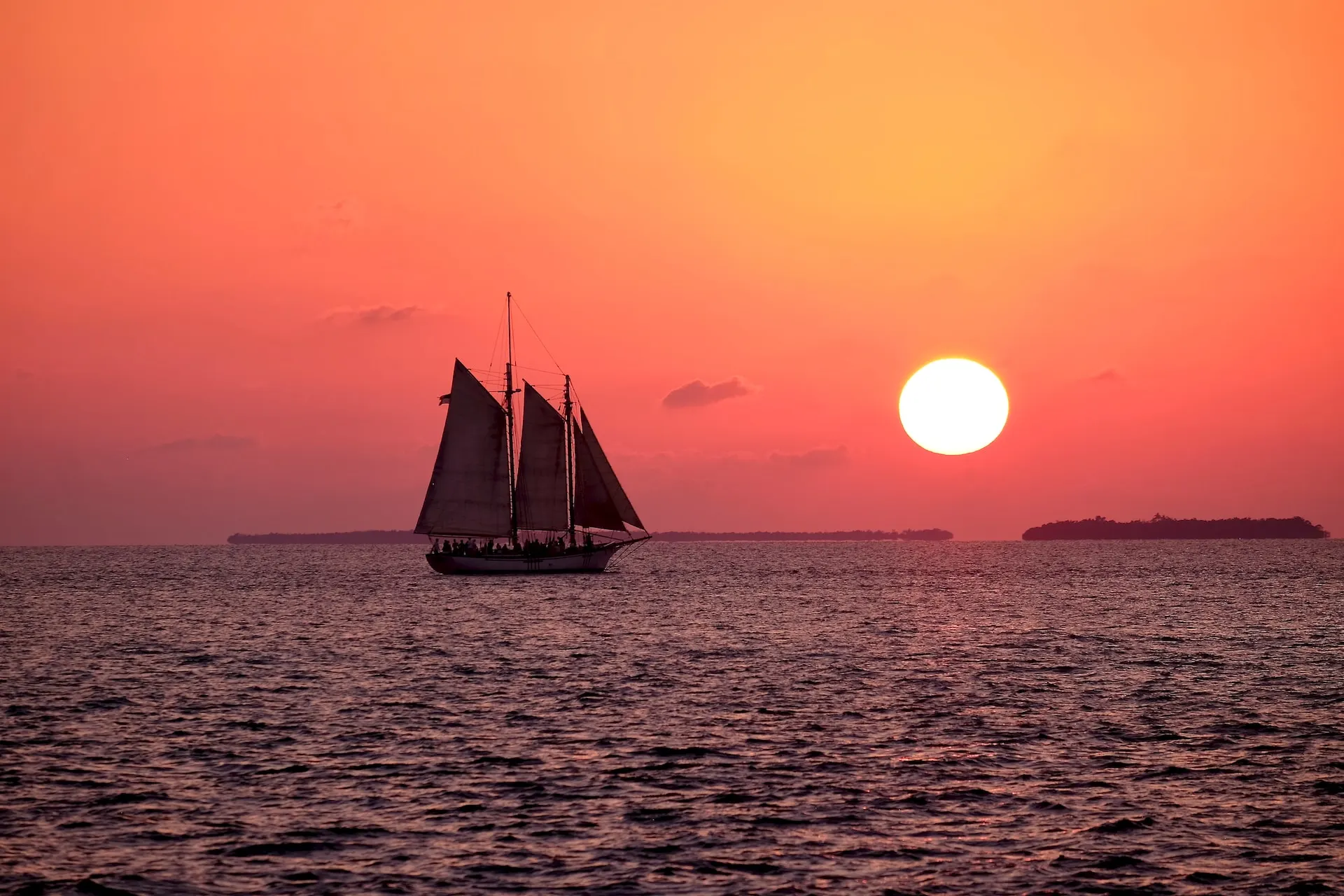
Related Posts
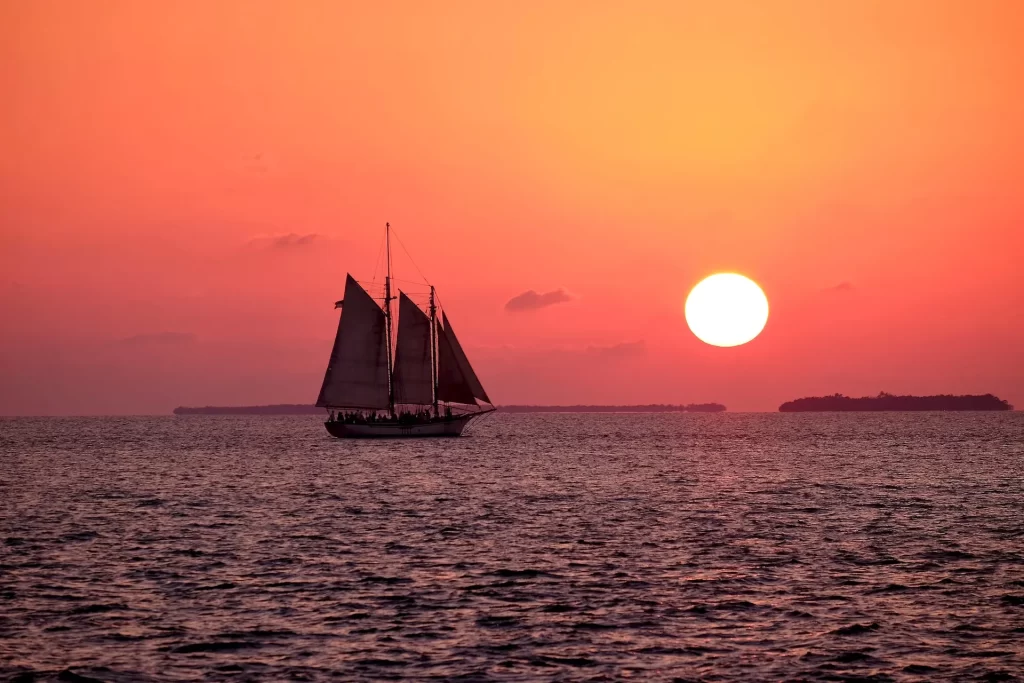
How Long Before Outboard Spits Water
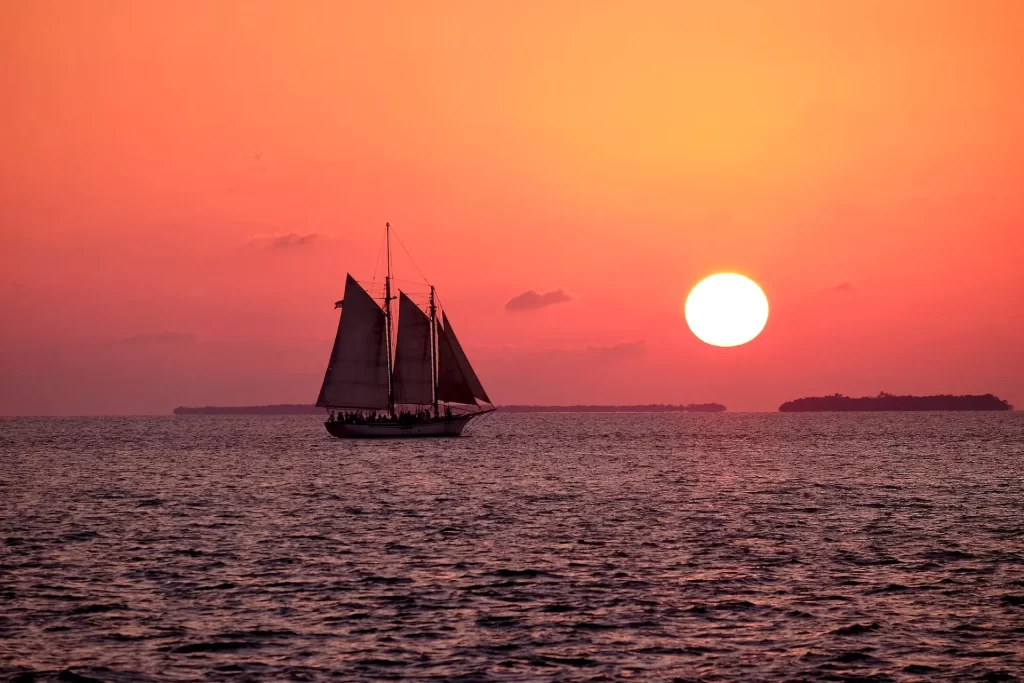
How Long Does it Take to Travel 50 Miles by Boat: A Comprehensive Guide
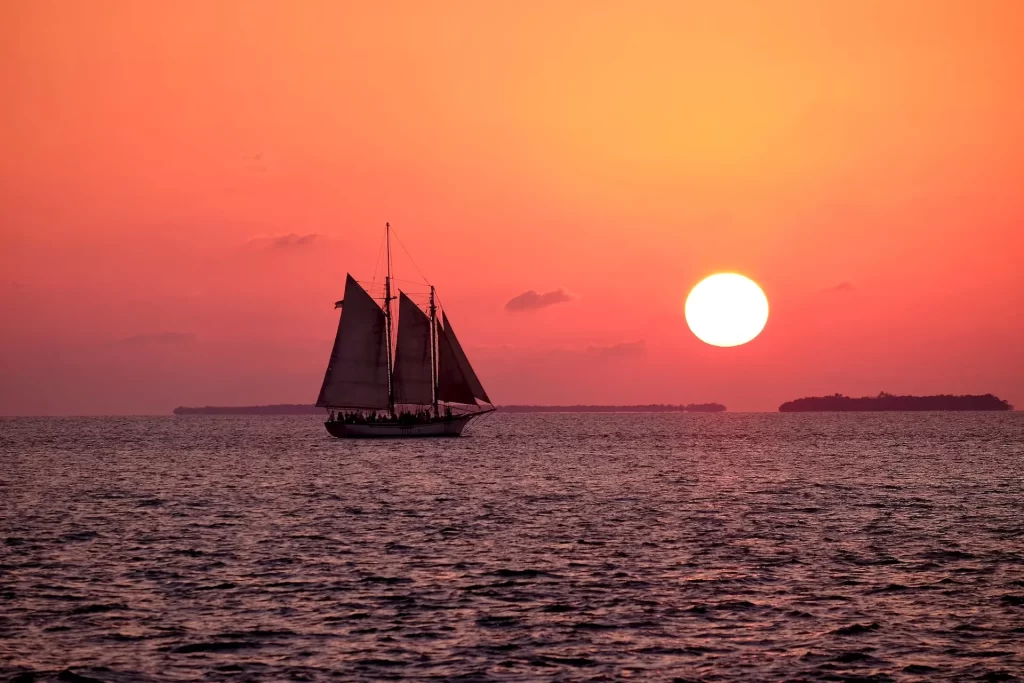
Does Boat Dry Weight Include Motor? Uncovering the Facts
How Much Fuel Does a Yacht Use? An In-Depth Analysis
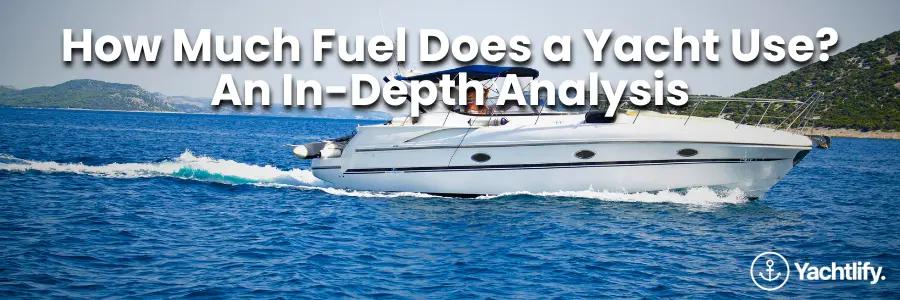
When it comes to luxury and adventure on the high seas, yachts are the epitome of both. Whether you’re a yacht owner or dreaming of chartering one for your next vacation, understanding the fuel consumption of these majestic vessels is crucial. Fuel usage not only impacts the cost of your journey but also has environmental implications. In this article, we dive into the factors affecting yacht fuel consumption and provide insights to help you estimate how much fuel a yacht uses.
Understanding Yacht Fuel Consumption
Fuel consumption in yachts is influenced by several factors, including the yacht’s size, engine type, cruising speed, and conditions at sea. Here, we break down these elements to give you a clearer picture.
Yacht Size and Engine Type
Yachts come in various sizes, from smaller 40-foot models to massive 100-foot plus luxury liners. Generally, the larger the yacht, the more fuel it consumes. Engine type also plays a significant role. Traditional diesel engines are common, but newer models may feature more efficient or hybrid engines that can impact fuel usage.
Cruising Speed
Speed is a significant factor in fuel consumption. Higher speeds increase resistance in the water, requiring more power and, consequently, more fuel. Cruising at a yacht’s optimal speed, often referred to as the “hull speed,” can help maximize fuel efficiency.
Conditions at Sea
Sea conditions can also affect fuel consumption. Smooth, calm waters allow for more efficient travel, while rough seas can increase fuel use due to the additional power needed to maintain speed and stability.
Estimating Yacht Fuel Consumption
While it’s challenging to provide a one-size-fits-all answer due to the variables involved, we can offer some general guidelines. On average, a yacht might use between 20 to 100 gallons of fuel per hour. Smaller yachts, such as those around 40 feet, tend to be on the lower end of the scale, consuming about 20 to 40 gallons per hour. Larger vessels, which are over 100 feet, can consume significantly more, sometimes exceeding 100 gallons per hour, especially at higher speeds.
Example Calculations
Let’s look at an example. For a 70-foot yacht cruising at a moderate speed of 20 knots, fuel consumption could be around 50 gallons per hour. If you’re planning a 100-mile journey, at 20 knots, it would take you approximately 5 hours. This means the total fuel consumption for the trip could be around 250 gallons.
Tips for Reducing Fuel Consumption
- Cruise at Efficient Speeds: Find and maintain your yacht’s hull speed for optimal fuel efficiency.
- Regular Maintenance: Keep the engine and hull in top condition to reduce drag and ensure the engine runs efficiently.
- Plan Your Route: Opt for the most direct route and consider current sea conditions to minimize unnecessary fuel use.
- Lighten Your Load: Only carry what you need for your journey, as extra weight can increase fuel consumption.
Understanding and managing fuel consumption is crucial for any yacht owner or enthusiast. By considering the factors outlined above and implementing fuel-saving strategies, you can enjoy the luxury of yachting more sustainably and cost-effectively. Whether planning a short excursion or a long voyage, a careful consideration of fuel use will enhance your experience on the water.
Remember, every yacht is unique, and so is its fuel consumption. For specific figures, consult your yacht’s manual or speak with a marine professional who can provide insights tailored to your vessel. Enjoy your time at sea, and sail smartly!
Listing your boat with Yachtlify provides several unique benefits, including:
- List once, post on multiple platforms (Yachtlify.com, Facebook Marketplace, Instagram, and others).
- Schedule showings and sea trials with our calendar and reminders.
- View listing engagement analytics across platforms.
- eSign, state forms, and Coast Guard forms to manage closing documentation in once place.
The Real Cost of Buying & Owning a 50-Foot Yacht
A 50-foot yacht can be difficult to maneuver, especially in tight spaces and harsh weather, so you need to invest in proper training for yourself and your crew. You may also need to apply for special permits and licenses to operate in certain areas. These factors can add up quickly to the overall costs, so if you are determined to own a 50-foot yacht, here's the real cost of buying and owning one.
The total estimated upfront costs of buying a 50-foot yacht range from $458,000 to $692,000 and include the initial purchase price and other fees. There are also hidden costs that total $70,000–$300,000+ per year. For ongoing costs, the total estimated annual costs are $35,000–$85,000 per year.
Although costly, with proper budgeting, maintenance, and strategic planning, you can manage the costs of owning a yacht and still enjoy the lifestyle that comes with it. Let's look at some practical tips to help you manage the costs of owning a 50-foot yacht.
- A high-end luxury yacht may cost significantly more than a basic production yacht with standard features and finishes.
- A new yacht with low engine hours and minimal wear and tear may command a higher price than an older yacht.
- Hiring a surveyor can help you save money in the long run by identifying any potential problems before you purchase the yacht.
- Fuel costs can add up quickly, since a 50-foot yacht with twin diesel engines uses almost 20–30 gallons of fuel per hour.
- Winter storage can protect your yacht from the elements, and it can also add up to the overall cost of owning a yacht.
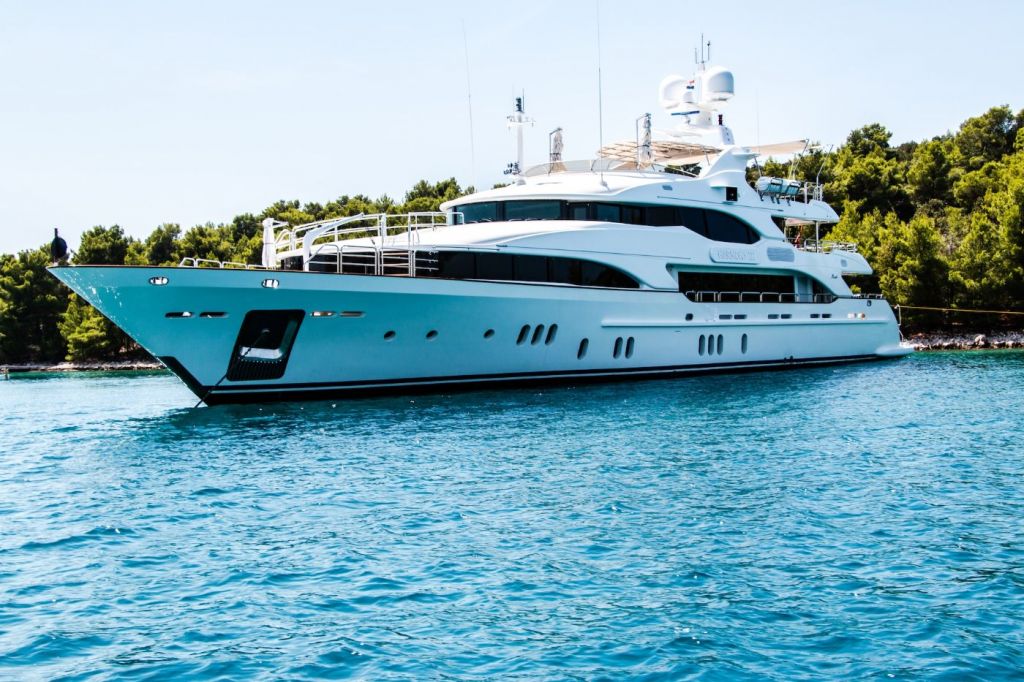
On this page:
Cost of buying & owning a 50-foot yacht, upfront costs of buying a 50-foot yacht, hidden costs of owning a 50-foot yacht, ongoing costs of owning a 50-foot yacht, tips for managing the costs of owning a 50-foot yacht.
When buying a 50-foot yacht, there are several costs to consider, such as upfront costs, hidden costs, and ongoing costs per year. Here's a rundown on the all-in cost:
| $458,000 - $692,000 | |
| $70,000 - $300,000+ per year | |
| $35,000 - $85,000 per year |
In this section, we will break down these costs into sub-sections to give you a better idea of what you can expect.
| $400,000 - $600,000 | |
| $40,000 - $60,000 | |
| $3,000 - $7,000 | |
| $15,000 - $25,000 | |
The purchase price of a 50-foot yacht varies depending on the model
Different models of yachts may have different features, amenities, and capabilities, which can affect their value and appeal to buyers . A high-end luxury yacht with state-of-the-art technology, custom finishes, and top-of-the-line appliances may cost significantly more than a basic production yacht with standard features and finishes.
Similarly, a newer yacht with low engine hours and minimal wear and tear may command a higher price than an older yacht with more use and maintenance requirements. Yachts located in popular boating destinations or areas with high demand may be priced higher than those in less desirable locations.
Here are some examples of different yacht models, their amenities, and estimated prices:
| Spacious cockpit, large swim platform, modern interior, air conditioning, generator | ||
| Comfortable saloon, large galley, spacious cabins, teak decks, bow thruster | ||
| Dual helms, spacious cockpit, large swim platform, modern interior, air conditioning | ||
| Sleek design, large windows, spacious cabins, modern interior, self-tacking jib | ||
| Spacious flybridge, large cockpit, modern interior, generator, air conditioning |
Sales tax and registration fees
When you purchase a yacht, you will need to pay sales tax and registration fees. In some states, you may be able to avoid paying sales tax if you purchase the yacht in a different state and keep it there.
In Florida, the sales tax rate is 6% , but there is a cap of $18,000 on the amount of tax you will pay. So if you purchase a yacht for $500,000, you will only pay $18,000 in sales tax.
On the other hand, registration fees are the fees you need to pay to register your yacht with the state where you plan to operate it. The fees are typically used to fund marine programs, such as boating safety education, law enforcement, and conservation efforts.

Some states charge a flat fee, while others charge based on the length of the yacht. In some cases, the registration fees may also be based on the age or value of the yacht. These fees are typically renewed annually, and failure to renew your registration can result in penalties or fines.
Registration fees in Florida for a yacht over 110 feet in length can be as high as $4,000 per year. However, for a yacht under 16 feet in length, the registration fee is only $5 per year.
Survey and inspection costs
A survey and inspection is essentially a thorough examination of the yacht by a professional surveyor. The surveyor will inspect the vessel from top to bottom, looking for any issues or potential problems that could affect the yacht's seaworthiness or value. This includes checking the hull, deck, rigging, electrical systems, plumbing, and more.
For smaller yachts, the cost may be a few hundred dollars, while larger and more complex yachts could cost several thousand dollars.
By identifying any potential problems before you purchase the yacht, you can negotiate with the seller or even decide not to purchase the yacht altogether. In the long run, this can save you money and help ensure that you're making a sound investment.
Insurance and financing costs
Insurance rates can vary widely, but you can expect to pay a premium for coverage. The higher the value of the yacht, the higher the insurance premium will be.
As for financing, the interest rates for yacht loans are typically higher than those for home or car loans. This is because yachts are considered luxury items and are often seen as a higher-risk investment. The interest rate you'll be offered will depend on your credit score, income, and the amount of the loan you're seeking.

Aside from the upfront costs, there are also hidden costs beyond the initial purchase price. Here are some hidden costs you should be aware of:
| $10,000 - $50,000 | |
| $50,000 - $150,000 | |
| $10,000 - $100,000+ | |
Environmental and regulatory compliance
Owning a yacht also comes with environmental and regulatory compliance costs. You may need to pay for permits to dock your yacht in certain areas, or you may need to invest in equipment to comply with environmental regulations. These costs can add up quickly and may not be immediately apparent when you're considering purchasing a yacht.
Crew and staffing costs
If you plan to use your yacht frequently, you'll likely need to hire a crew to help you maintain and operate it. Crew and staffing costs can include salaries, benefits, and insurance, and can be a significant expense over time. Additionally, you may need to pay for crew training and certification , which can add to the overall cost of owning a yacht.
If you're looking for paid courses for your crew, here are 9 best sailing courses you might want to check out.
Costs of upgrades and customizations
While a 50-foot yacht may come equipped with many standard features, you may want to add additional amenities or customize the interior to your liking. These upgrades can be expensive and may not be covered by your initial purchase price.
Upgrades and customizations can range from relatively minor changes such as adding a new sound system or upgrading the navigation equipment, to more extensive modifications such as adding a new deck or completely redesigning the interior of the yacht. The cost of these upgrades will be based on the extent of the modifications and the materials and labor involved.
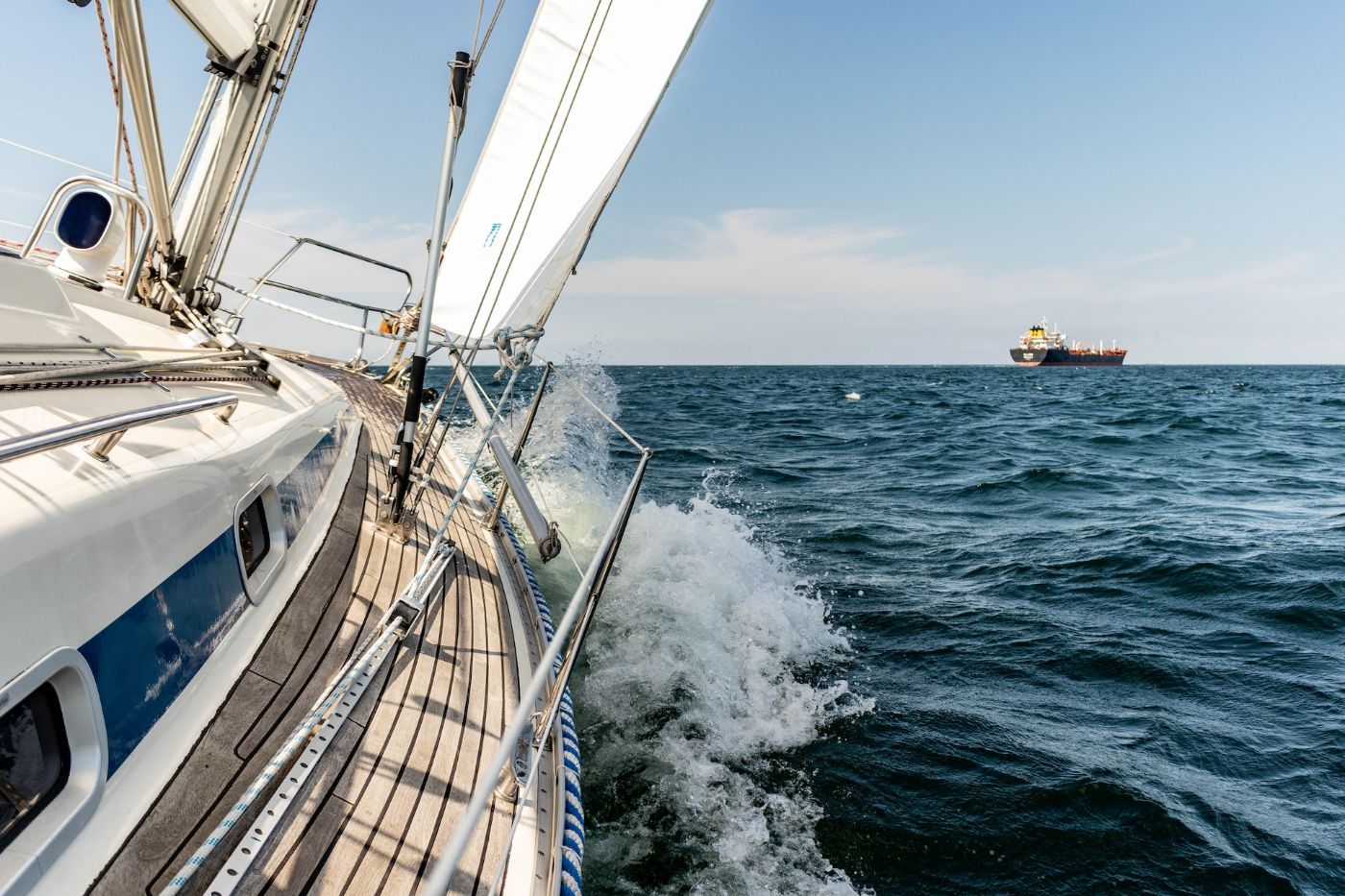
In this section, we will discuss the ongoing costs of owning a 50-foot yacht.
| $10,000 - $30,000 | |
| $5,000 - $15,000 | |
| $10,000 - $20,000 | |
| $5,000 - $10,000 | |
| $5,000 - $10,000 | |
Maintenance and repair costs
Regular maintenance helps keep your yacht in good condition and prevents costly repairs. Some common maintenance and repair costs include:
- Engine maintenance
- Hull cleaning and painting
- Electrical and plumbing repairs
- Sail and rigging repairs: ( Here's an article on the cost of replacing a standing rigging )
- Interior and exterior cleaning
Docking and storage fees
Some common docking and storage fees include:
- Monthly slip rental fees: These fees cover the cost of renting a slip at a marina or dock for your yacht to be moored. Slip rental fees can range from a few hundred to several thousand dollars per month.
- Winter storage fees: During the off-season, many yacht owners choose to store their vessels on land to protect them from the elements. The cost of winter storage can range from a few hundred to several thousand dollars per season.
- Launch and haul-out fees: These fees cover the cost of launching your yacht into the water and hauling it out for maintenance or storage, and vary based on the location and the size of your yacht.
- Electricity and water fees: Many marinas charge additional fees for the use of electricity and water while your yacht is in the slip.
Fuel and operating costs
A 50-foot yacht typically has twin engines, which can be either gasoline or diesel. Diesel engines are generally more fuel-efficient and have a longer lifespan than gasoline engines, but they are also more expensive to purchase and maintain.
On average, a 50-foot yacht with twin diesel engines will use about 20-30 gallons of fuel per hour, while a gasoline-powered yacht will use about 40-50 gallons per hour.
Routine maintenance such as oil changes, filter replacements, and hull cleaning is part of the overall operating costs and will cost several thousand dollars per year. More significant repairs or upgrades, such as engine overhauls or electronics replacements, can cost tens of thousands of dollars.
Costs for insurance and maintenance reserves
Insurance can protect you from liability and damage to your yacht, while maintenance reserves can help cover unexpected repairs. Some common insurance and maintenance reserve costs include:
- Liability insurance
- Hull and machinery insurance
- Personal property insurance
- Emergency repairs and reserves
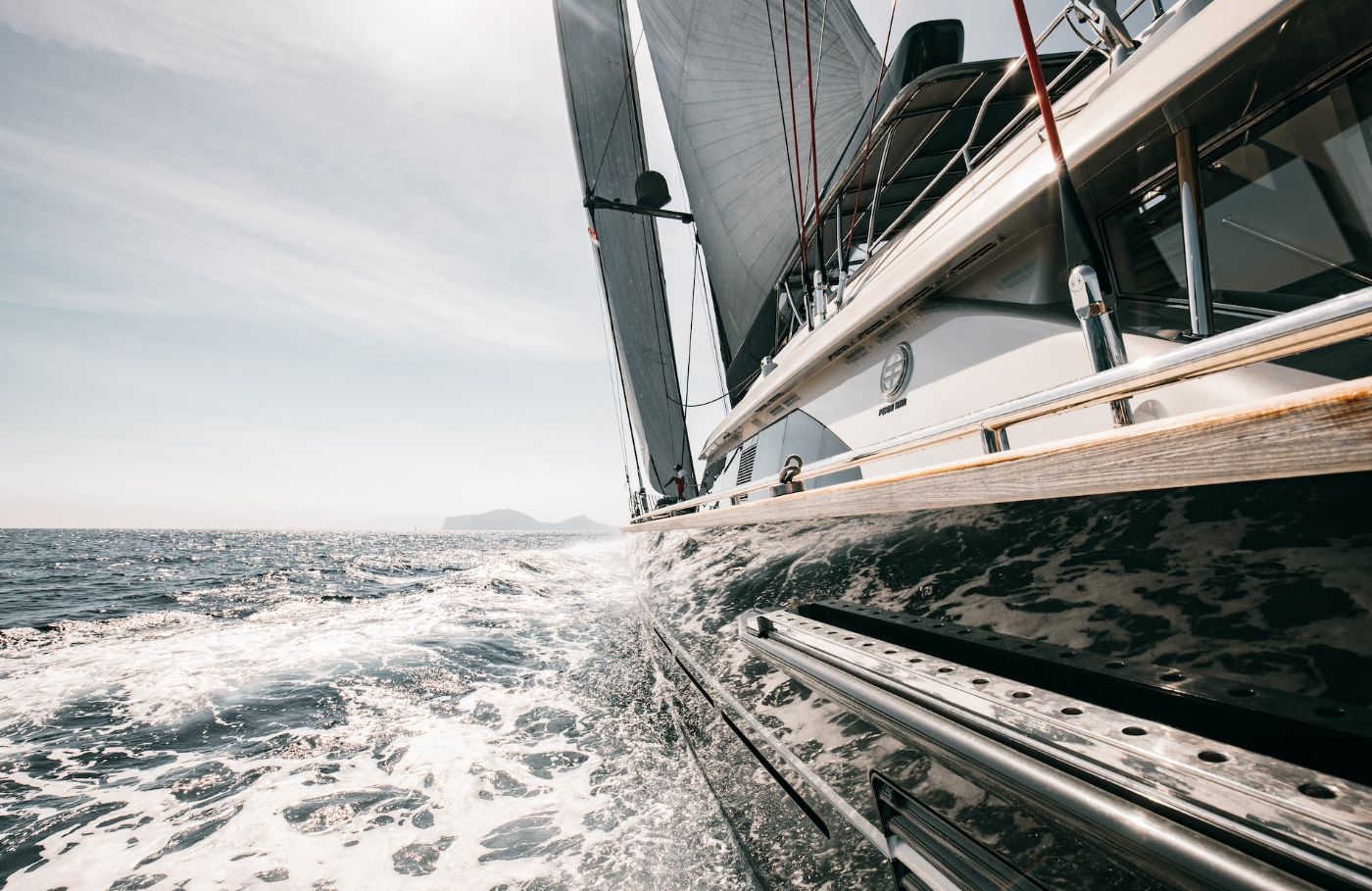
Here are some tips to help you manage the costs of owning a 50-foot yacht:
Create a budget and stick to it
Your budget should include all of the costs associated with owning and maintaining your yacht, including mooring fees, insurance, fuel, maintenance, and repairs. Try to plan for unexpected costs, such as emergency repairs or unexpected upgrades.
You should also plan ahead for seasonal expenses, such as winterizing your yacht when the boating season is over . By creating a budget and planning ahead, you can avoid surprises and ensure that you have the funds necessary to keep your yacht in top condition.
Do the basic maintenance and repairs by yourself
While there are some tasks that require a professional, such as engine repairs or electrical work, there are many things you can do yourself with a little knowledge and the right tools.
By doing your own maintenance and repairs, you can save money on labor costs and ensure that your yacht is always in top condition. You can also take pride in knowing that you are taking care of your investment and keeping it in great shape.
Consider sharing and chartering options
If you don't use your yacht all the time, you may want to consider sharing or chartering options as a way to offset the costs of ownership. Sharing your yacht with friends or family members can help split the costs of maintenance and repairs while chartering your yacht to others can help generate income.
There are many websites and companies that specialize in yacht sharing and chartering where you can find an option that works best for you. Just be sure to carefully vet anyone who will be using your yacht to ensure that they are responsible and will take good care of your investment.
Learn some selling and trading strategies
If you find that the costs of owning a 50-foot yacht are too high or you are ready to move on to something else, you may want to consider selling or trading your yacht. There are many strategies you can use to get the best price for your yacht, including working with a broker, advertising online, or attending boat shows.
If you are interested in trading your yacht for something else, perhaps carefully consider your options and work with a reputable dealer. By using these strategies, you can ensure that you get the best value for your investment and can move on to your next adventure with confidence.
Leave a comment
You may also like, cost of buying & owning a small yacht (detailed breakdown).
While some people may prioritize a slower, more eco-friendly, and more hands-on experience that they get from a sailing yacht, others may prefer a faster, more …

The Average Cost of Owning a Boat in Florida (4 Examples)

Average Cost of Buying & Owning a Catamaran (With 4 Examples)
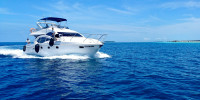
2023 Cost Of Mediterranean Yacht (As Seen On Below Deck)
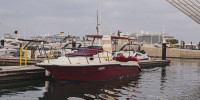
Average Cost of Buying & Owning a Yacht in Dubai (2023)
Boat Fuel Consumption List
The fuel consumption of any yacht, can vary widely based on several factors including the yacht's size, engine type, cruising speed, and conditions under which it is operated.
The figures above are average calculated.
| Boat Name | Average Fuel Consumption (liters per hour) |
|---|---|
| Waterdream | 200-300L |
| Mangusta 108 | 990L |
| CRN 130 | 650L |
| Astondoa 102 GLX | 650L |
| Pershing 5X | 250L |
| Pardo 50 | 200L |
| Princess V72 | 400L |
| Mangusta 92 | 700L |
| Sunseeker Predator 84 | 600L |
| Leopard 27 | 550L |
| VanDutch 55 | 200L |
| Pershing 72 | 600L |
| Vanquish 82 | 350L |
| Pershing 90 | 900L |
| Vanquish 52 | 200L |
| Riva Rivale 56 | 250L |
Boat Fuel Cost Calculator
Data Policies
Social media, yachts zenith nautic s.l.
VAT Number: B56880875
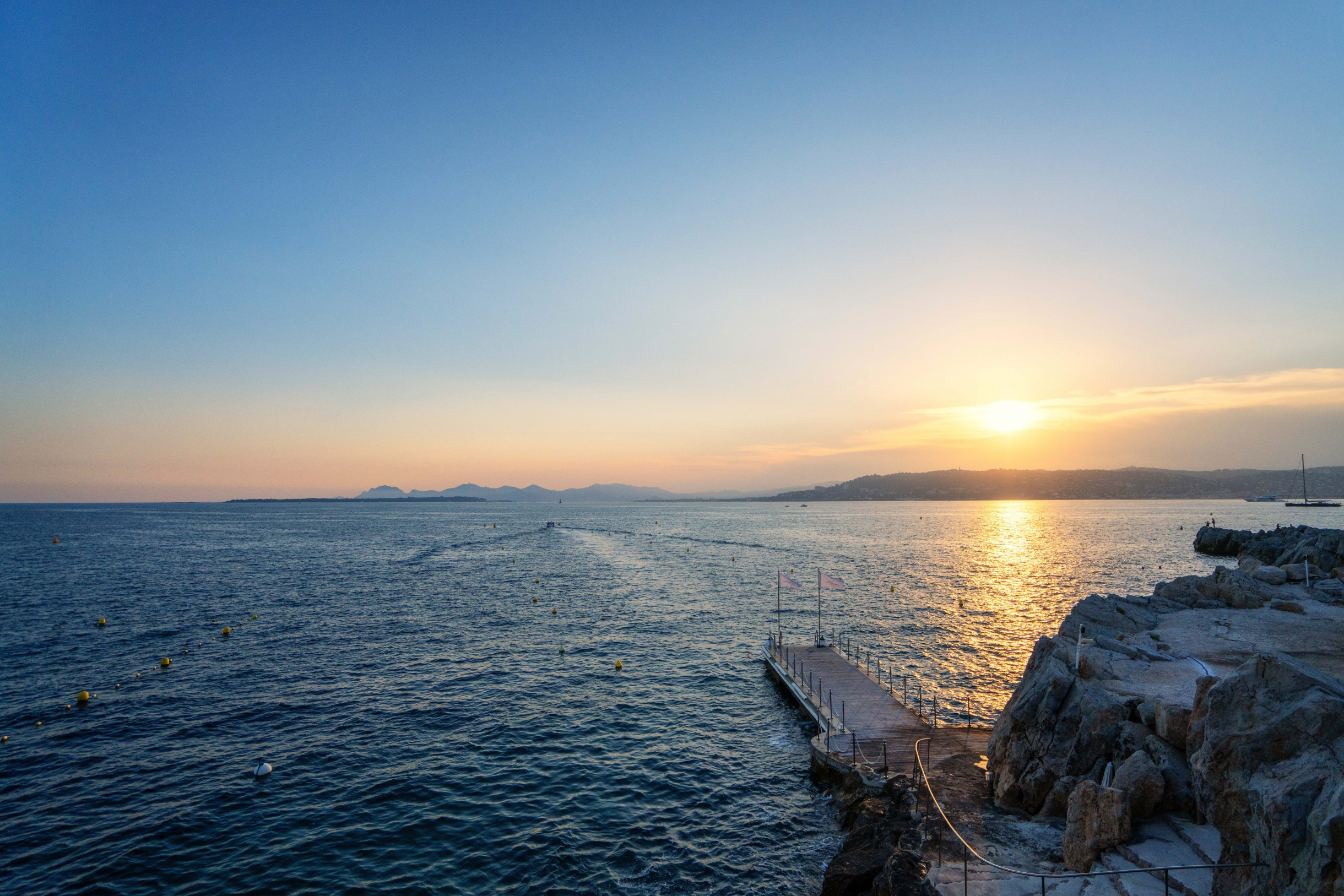
Welcome to the West Nautical Fuel Calculator
HOW TO USE:
To plot points on the map, click with your mouse - this will automatically update the distance table. Then enter the speed, fuel consumption, and fuel cost to determine the total cost of the trip.
Example 1: A fast 30m yacht cruising at 20 knots ( Lady Amanda ) will consume roughly 400-500 l/hour (more depending on engine type).
Exampe 2: A typical displacement yacht may cruise at 12 knots and consume 300 l/hour
Example 3: Some yachts can cruise at 10 knots ( Firefly ) and consume 100 l/hour
Example 4: A sailing catamaran can cruise at 8 knots and consume around 35 l/hour
Fuel prices can fluctuate, but typically fuel is between €0.8 - €2.2 per litre.
Get in touch with one of our client managers for a more accurate fuel distance calculation.
- 0 Fuel Consumed (L)
- 0 Total Cost

- Search forums
- Motor Boat Forum
Average fuel burn rate on different size boats..
- Thread starter wipe_out
- Start date 5 Jun 2013
Active member
As you do I am looking at bigger boats.. Obviously one of the major factors is how much fuel it will burn but this also seems to be the hardest information to find.. Even finding "average" numbers for say 35ft, 40ft, 45ft, 50ft..... boats is proving problematic.. I know there are the calculated consumption methods of xx litres per HP but then you need to know how many HP are being used to maintain say 20kn.. So lets say you were looking at flybridge cruisers and wanted to get some idea of how much fuel they would burn at 20kn how would you go about finding the information so you could make a comparison and evaluation?
epervier said: This reminds me of the old RollsRoyce reply, if sir has to ask how much, sir can't afford it Click to expand...
Didn't jfm say in his new Match build thread that he was hoping his new Sq 78 had better fuel consumption than the old one and would burn less than 20 gallons a minute at 20 knots? Or did I just make that up?
Divemaster1
Well-known member.
I think more importantly you need to look at your planned use area etc., and determine how long the "average" journey will be. Then asess how long you will spend at 20 knot during these journeys.... Speed = £££ and size combined with speed = £££££££ Very few leisure boats will spend much above 2 hrs (on average) in the 20 knot area, but I know that from often running a heavy 45 foot boat for 4 hrs plus in this range, you will not get much spare for 90 - 110 litres per hour.... However, our average hourly consumption is significantly less than that as our average speed, to and from marina, in amongst other boats etc., means our speed and thus engine load drops big way. So advise would be to look at how you would use the boat, area to cruise in and assess if you really need those 20 knot as cruise when you have a bigger boat to enjoy the journey in...
superheat6k
Ths is a thoroughly debated coconut with a similar answer to the length of a piece of string ! In very rough terms, and I now expect to be shot thoroughly, for budgeting and planing at 20 knots ... 30' 2-2.5 mpg 35' 1.5 - 2 mpg 40' 1 - 1.5 mpg Most owners will likely and optimistically suggest their boat is far better than this, whilst wincing as they fill the thing up. This is Loa excluding swim platforms, which most boats now count in the declared length, which is akin to including the flap in the end of a durex as a valid part of your manhood dimensions, but then I guess for many of us our boats are just penis extensions, that's what SWMBO thinks anyway. Drive type and qty of shafts, engine size and type and driving style, not to mention persons aboard and tank levels, inventory / unnecessary rubbish levels will all have an affect. Then there's sea state, wind direction, tidal flows. If you think about it too hard you will conclude in short order that the non obsessed would never own a boat, especially a planing power boat, but that's where common sense and boat ownership part company !
I think that the weight of the boat gives a good clue, my boats so far using weights from the boat lift gave the results below, on calm seas. Gets rough you use more sealine 410, length 42 feet, weight @ 10 tonnes with 71Bs did @ 1.1mpg @ 20kns ish targa 43 length 45 feet, weight @ 9 tonnes with 63Ps did @ 1.2mpg @ 20kns sealine t50 length 50 feet, weight 18 tonnes with D9s does 0.65mpg at 22kns so a crude rule of thumb is to compare weight and length to give an indication of what a future purchase might do to the wallet.
another method i have used is to take the estimates from MBYs tests and make them 10% worse. On the boats I have owned that Mr Marsh has tested this seems to work quite well too. I guess test boats are effectively stripped bare and light on fuel to keep the weight down and the mpg up.
essex boat yards have a sealine t46 for sale at a very good price -loads of room and not bad mpg
There is, of course, an element of choice in cruising speed. We were on the NYA cruise in company last week (an excellent week but that is another story) and did several sections of the sea passages at 7-8 knots. Our boat is very comfortable and whilst fuel consumption was a significant consideration when we bought her we concluded that our sea trips wouldn't always require 18-20 know cruising but it is good to have the choice (so displacement boats were not a consideration).
That's where I am as well.. Full displacement gives you no choice of speed where planing hull maybe a little less efficient at displacement speed it had the option of going faster.. I know I will run at different speeds depending on many factors like who is on board, the weather and what I feel like but just chose 20kn as the reference for side by side comparison.. Out of interest do bigger boats come onto a plane a lower speed or are they all about the same?
bigger boats plane properly at slightly higher speeds - but not much more. re- planing boat at displacement speeds, I think the economy is very similar to displacement boats at these speeds as planing boats weigh quite a bit less. another thing to think about is that the longer the waterline length of a boat the faster its displacement mode speed is.
Members online
- usernamesteve
- CrossedThreads
- reallycoliholic
- wingcommander
- Richborough
- Sticky Fingers
- Buck Turgidson
- RogerFoxTerrier
- TK Blue MAX
- double_ender
- Wandering Star
- jasperthedog
- WildGoldfish
- Seashoreman
Share this page
Log in or Sign up
You are using an out of date browser. It may not display this or other websites correctly. You should upgrade or use an alternative browser .
Fuel Consumption of Larger Yachts
Discussion in ' Boat Design ' started by Slimjim , Sep 14, 2012 .
Slimjim New Member
Hi to all and thanks from a lurker. I'm thinking of getting a larger motoryacht to live aboard,as the values of the 10-15 year old yachts have really dropped with the meltdown and what not. I have ocean front property,so docking is no problem. I have looked and emailed brokers,but can't find any info on consumption at lower speeds-it's not so much the amount as we will use it rarely- just need to know what kind of range I may expect for a 75-85' yacht like a Sunseeker. Any hints will help and thanks again. Jim
WestVanHan Not a Senior Member
Hi slim and welcome to the board. I've had those thoughts lately too..the prices have dropped,and any on the market have been so for years..so the owners need to get realistic. I have a small oceanfront cabin up the coast-but docking in front of it is not a good thing and as you know docking anywhere near Vancouver for something that big is very hard and $$$$$. Otherwise I'd be so tempted. Anyways,I was on a charter Sunseeker 84 Manhattan. Almost all of them came with the 1400hp Cat 3412-which is not a too desirable state of affairs. If they've been used to any of the hp potential they tend to have problem$$. Or when..and I mean "when" not "if" one of them drops a valve,a liner fails,a skirt breaks,or the aftercooler leaks and breaks your pistons-pull it out and throw in a reman Cummins QSB11 as the main driver. Anyways I remember at 10 knots/1000 rpm both engines/ it was 90 litres an hour. I don't see why not at 7-8 knots, you'd be down to 50-60 litres an hour. You'd want to open them up a couple minutes every hour. At 22 knots it's 400+ litres an hour. Look into Fairline,Princess/Viking-the Italian boats seem to be more expensive.
TANSL Senior Member
Search with Google catalogs of engine manufacturer. They indicate consumption, generally, in grams / hp-hour. (about 200 gr/hp-h) They do not say that consumption occurs under ideal navigation conditions, with the engine at 80%, but is data that can be used with caution. See attached example.
Attached Files:
Yamaha FL250AETU.doc
Trying to be helpful tansl, but without knowing how much hp it takes to move the yacht at a speed-charts and specs are useless.
WestVanHan said: ↑ Trying to be helpful tansl, but without knowing how much hp it takes to move the yacht at a speed-charts and specs are useless. Click to expand...
Tad Boat Designer
Princess V72 C32 Cats 1000 RPM = 11.3 knots and 40gph = range of 295 miles Sunseeker 70 1550 HP MANs 1000 RPM =10 knots and 23gph = 500 miles range 1250 RPM = 11 knots and 42.5gph = 300 miles range 1500 RPM = 18.3 knots and 51gph = 399 miles range (best mpg) Those are US gallons
Squidly-Diddly Senior Member
not to thread jack, but how about two engines on one shaft, so..... you aren't lugging a big diesel at lower speed, but still got full power with both engines running. Ideally, I'd have 6 and 12 cyl engines, so I'd have 3 possible power levels....6, 12 or 18 cyls.
mydauphin Senior Member
If you have to ask... You cant afford it. Owning a big yacht is not about fuel, everything else is expensive too. Keep it below 50' and you will save tons of money.
mydauphin said: ↑ If you have to ask... You cant afford it. Owning a big yacht is not about fuel, everything else is expensive too. Keep it below 50' and you will save tons of money. Click to expand...
TANSL said: ↑ Well, you tell me how you will meet the consumption?. Or do you think that yachts consume according to their length? B.R. Click to expand...
OK WestVanHan, sorry if I said something wrong but I do not understand why we can not use information that the engine manufacturer provides. Cautiously or wrongly, is often the best information we can provide. On the other hand, you're right, not only are the main engines that consume fuel, we must take into account all other consumers of fuel in the boat. So I think that neither yours nor my data can answer this question. Finding a yacht consumption, and therefore its autonomy, is quite complicated. But. if the manufacturer gives us a data, why not use it? It's not that I try to help but not answering the question. It is, in my opinion, that if we do not use data as I propose is very difficult to estimate the consumption / autonomy of a ship, with rigor.
TANSL said: ↑ So I think that neither yours nor my data can answer this question. Click to expand...
Jim; forgot to mention there's been a Sunseeker 94 docked here in Vancouver for 12-13 years.I know it had very very rarely been away from the dock up to 2009. I walked and biked past it almost every day. And the last 4 years AFAIK it' hasn't been away much either,I'd guess for haulouts or runs. It was on the market continuously until a couple years ago-but I'd guess they still think it's worth the $4M they were asking for it in 2001. Oh and the tankage on the 84 was 7500 or so..so at 10 knts you should go ~850 miles to empty-more than enough to circumnav. the Island and spend a year parked in the Broken Group if you wanted.
FAST FRED Senior Member
"not to thread jack, but how about two engines on one shaft, so..... you aren't lugging a big diesel at lower speed, but still got full power with both engines running." Ideally, I'd have 6 and 12 cyl engines, so I'd have 3 possible power levels....6, 12 or 18 cyls. " The past 40 years or so the US Navy has been installing two engines tied to a gear box and single shaft on landing craft. My preference would be for a smallish diesel to operate efficiently at 80% power 90% rated RPM for long range cruising, and a stock motor for the times to make a big wake and de-fuel the boat rapidly. 3-71 and 6-71 or 80Hp Deere tractor with Intl DT 466 ,,more Modern , might use less fuel Engine can be disconnected under way , but requires shut down to engage to reengage either engine. No big deal.
- Advertisement:
FAST FRED said: ↑ "not to thread jack, but how about two engines on one shaft, so..... you aren't lugging a big diesel at lower speed, but still got full power with both engines running." Ideally, I'd have 6 and 12 cyl engines, so I'd have 3 possible power levels....6, 12 or 18 cyls. " The past 40 years or so the US Navy has been installing two engines tied to a gear box and single shaft on landing craft. My preference would be for a smallish diesel to operate efficiently at 80% power 90% rated RPM for long range cruising, and a stock motor for the times to make a big wake and de-fuel the boat rapidly. 3-71 and 6-71 or 80Hp Deere tractor with Intl DT 466 ,,more Modern , might use less fuel Engine can be disconnected under way , but requires shut down to engage to reengage either engine. No big deal. Click to expand...
Fuel consumption opinions
Fuel tank location
1977 Starcraft American 16 fuel tank
Fuel efficiency index
rearranging fuel tanks reduce stern weight
Help Needed with stringer mods to fit Underfloor fuel tank
Reality Check Please- Fuel Tank
Digital fuel metering
Convert No-EPA fuel tank to EPA
Fuel vent posizion and ce/iso rules.
- No, create an account now.
- Yes, my password is:
- Forgot your password?


- Charter & Brokerage
- Yacht Design & New Builds
- Tenders & Toys
- Superyacht Events Calendar
- Career & Training
- Departments
- Superyacht Crew Finances
- Sustainability
- Shipyards and Marinas
- Health & Wellbeing
- Polar Region
- Our Services
- Meet the Team
Yachts And Fuel – How Much Do They Really Consume?
.png)
Fuel is one of many annual running costs of a yacht. Not only does the yacht need fuel for cruising; the generators require it to keep the vessel running while at anchor and underway. As well as this, many of the water sports toys require it too.
Some yachts cross the Atlantic Ocean twice a year between the Mediterranean and Caribbean while others embark on world cruises. That equates to a lot of fuel.
So How Much Do They Really Consume?
According to the Yachting Pages, the longest Superyacht in the world, 180m M/Y Azzam, holds 1,000,000 litres of fuel. To put it into perspective, that is the equivalent of filling a regular hatchback car 23,800 times. Or, six Boeing 747 commercial airliners.
West Nautical’s Vessel Manager, Tony Hildrew, a former Yacht Chief Engineer said:
“Fuel is the single biggest expense when it comes to yacht operations, it is estimated that the global spend on fuel is around $150bn annually however this shouldn’t put you off, there are a number of ways to ensure your fuel consumption doesn’t get out of hand. Implementing a Ships Energy Efficiency Management Plan or SEEMP for short is a great way to keep fuel costs down without compromising on your cruising experience.”
Each yacht will consume fuel differently for a number of reasons. It could be the size and make of the engines. Or, how often the yacht is using generators. As well as the number of tenders and water sports toys on board that require fuel. For example, if the yacht is out at anchor and running on generators 90% of the time, the fuel consumption will be much higher than a yacht that is in a marina at night and connected to shore power and water.
Another factor that will affect fuel consumption is the yacht’s itinerary. This is because the sea conditions will impact how much fuel the engines consume.
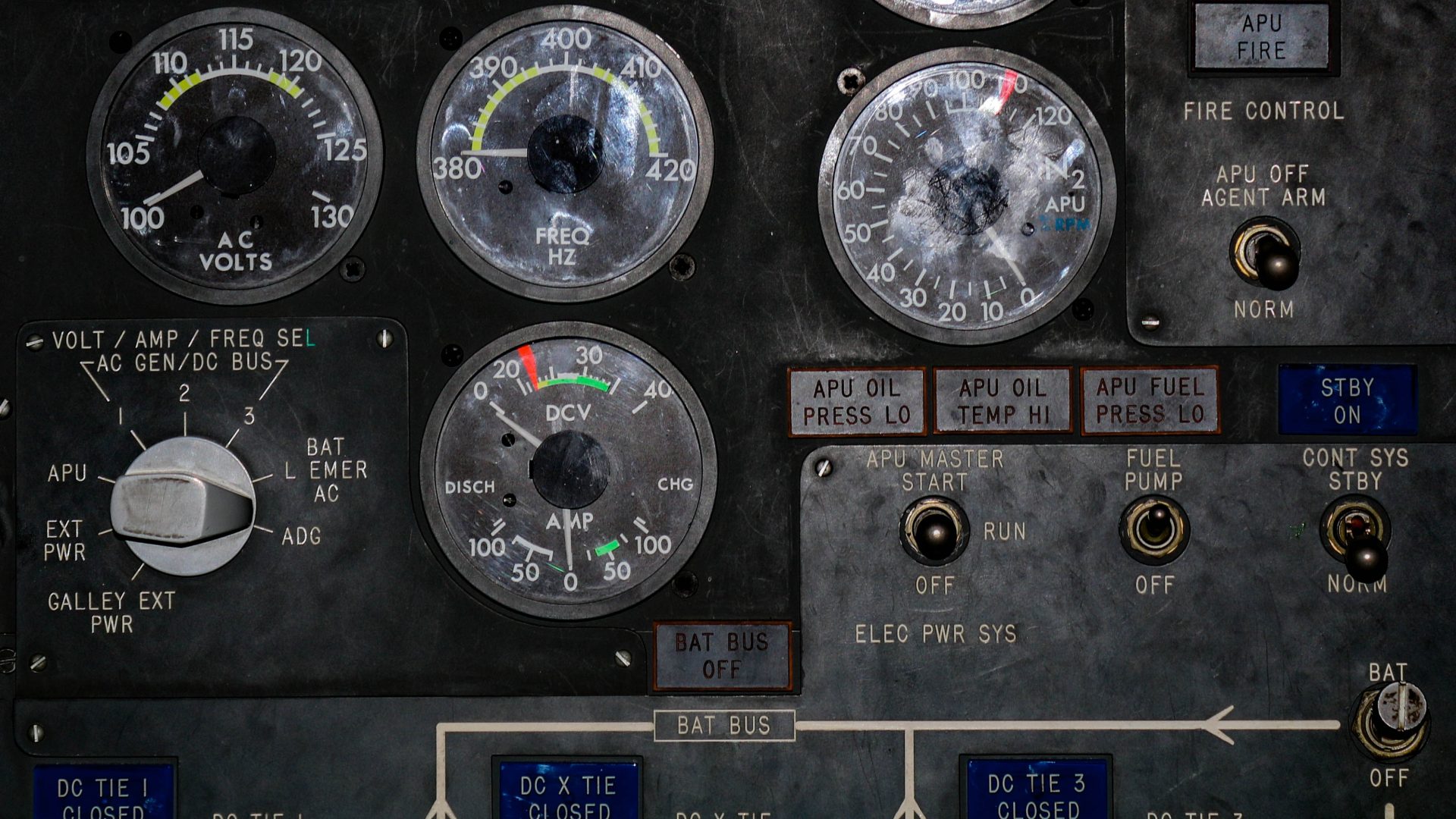
How Is Consumption Measured?
You will be able to input the start and ending points of your cruise on the map. This will automatically update the distance table. The next step is to enter the speed, fuel consumption and cost of fuel per litre to determine the cost of the trip.
Here is an example: A fast 30m yacht cruising at 20 knots will consume roughly 400 – 500 litres depending on the engine type. This would equate to the total consumption of 2500 litres for a distance of 100 nautical miles.
Another example is, a 70m yacht looking to travel 100 nautical miles with the engines burning 1000 litres per hour would add up to a total consumption of 8335L for that passage. Depending on where the yacht bunkered, the estimated cost with the price per litre being on the low end at €0.90 per litre would cost a total of €7501.50. An example of a 100 nautical mile passage would take you from Saint Tropez to The North Coast of Corsica.
How Much Does It Cost?
Fuel prices fluctuate depending on which country you bunker in and some places you bunker offer tax free fuel such a Gibraltar and Montenegro. Fuel prices can vary but typically costs between €0.80 and €1.30 per litre.
Yacht charter, sales and management company West Nautical added:
“Fuel costs should be at the top of any yacht owner and captain’s minds for two reasons: to minimise costs as well as reduce the environmental impact of burning unnecessary fuel. The superyacht charter market, more than most other markets, relies on pristine waters for their guests to enjoy their holiday. If the oceans in popular charter destinations are not maintained, it will decrease the demand for yacht charter and therefore the revenue for owners.” “If you are looking for expertise in operational management and engineering in order to plan a SEEMP, West Nautical would be delighted to assist.”
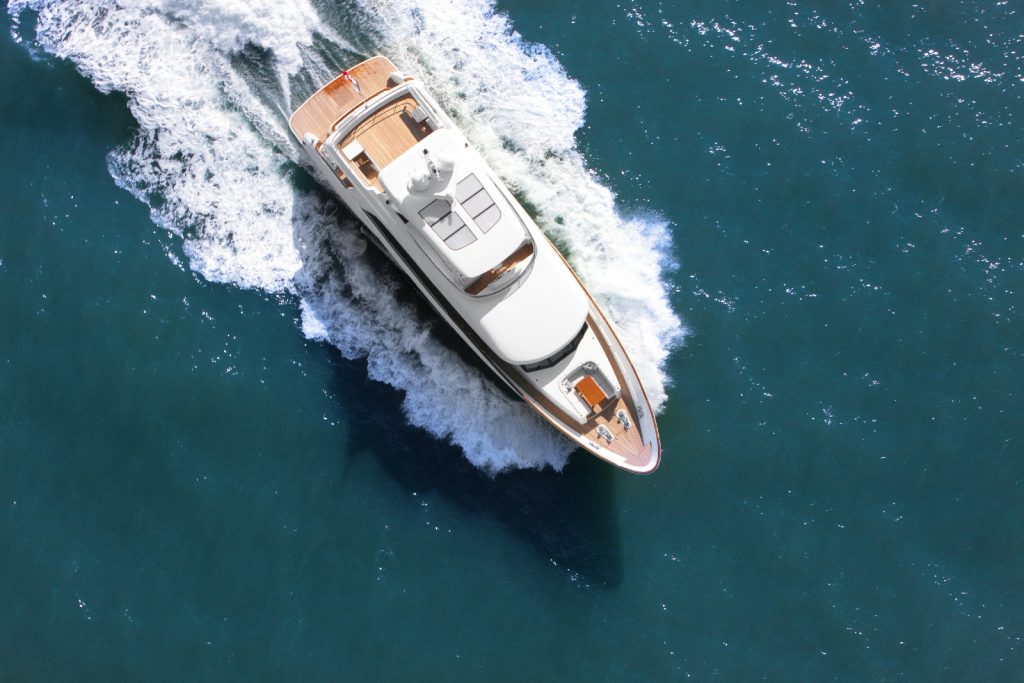
About West Nautical
West Nautical sell, charter and manage superyachts from their head office in Newcastle upon Tyne. The business currently employs a team of 21 staff throughout their offices based in the UK, Russia, France and Cyprus.
Since their inception over 25 years ago, West Nautical have become recognised as one of the most respected, trusted, knowledgeable and accountable professional services firms in yachting – largely due to their relentless determination to act in our clients’ best interests. Their approach and attitude is transparent, refreshing and focused on providing value-added services delivered simply, elegantly and affordably.
Visit West Nautical’s website here: https://westnautical.com
For Media enquiries please contact sarah.mackenzie@westnautical.com
To keep up to date with the latest Superyacht Content News, click here .
Sign up to our Newsletter below:
Newsletter Signup
- Your Name First Last
- Your Email *

West Nautical
Related articles, lithium-ion battery safety on superyachts & the urgent need for industry awareness, know your ship how helideck pop-up foam firefighting systems work, scorpion tenders from twisted marine. setting world class standards, navigating busy season: crew wellness tips with superyacht fitness & emma from seas the mind.

Superyacht Content
Social media influencer and digital brand expert.
Superyacht Content brings you the latest in social news for the superyacht industry.
Keep up to date with us across our social channels, and don’t forget to hit that share button!
- Superyacht News
- Superyacht Jobs
- Superyacht Marketing
Join our Newsletter
Copyright © 2023 Superyacht Content | Website Design by Zonkey
Privacy | Credits | Get in Touch

Do you operate a yacht? Our app is perfect for you
Yacht fuel cost calculator - how to estimate the costs.
Yacht captains have many responsibilities when it comes to the management of their vessel. One of them is keeping track of expenses, which is why it is important to familiarize yourself with the vessel’s operational costs. Keeping a luxury superyacht afloat isn’t cheap, and many claim that the average annual cost ranks up to 10% of the vessel’s price.
From these expenses, a significant portion goes to fuel. Filling up the tank of your boat is quite pricey, which is why a growing number of boat owners want to know exactly how much they are looking to spend for their upcoming voyage. This is also important for people who want to charter a boat for their holiday.
If you’re wondering how to best estimate the costs involved, you’re in the right place. This article will help you calculate your vessel’s yacht fuel cost while giving an overview of all the criteria used as variables. To make the process even easier, we link to a yacht fuel cost calculator to help you get an indication of the expenses you’ll need to cover. Let’s delve in!
Yacht fuel cost calculator
How to estimate yacht fuel costs, how much fuel does a yacht use.
- Price of boat fuel per gallon?
Yacht fuel formula
The easiest way to calculate your fuel costs is by using a yacht fuel cost calculator. There is a great calculator available here in case you want to save time and get an approximate estimation.

As you can see, the yacht fuel cost calculator has many variables which you need to be aware of before you set out to calculate the approximate price. This is what we will be dealing with in the next few chapters.
To help you get a better understanding of the calculation process we will do things manually while giving you the exact formulas used to calculate your vessel’s fuel needs. Therefore, make sure you keep on reading.
There are several things you need to keep in mind when you first set out to estimate the total fuel cost for your next voyage. These are summarised in the following points:
- Distance of journey - The total amount of nautical miles (or km)
- Cruising speed - The (average) speed of your vessel (in knots or km/hr)
- Fuel consumption - Understanding how many gallons (or liters) of fuel are consumed per hour
- Yacht fuel price - Understanding the average market price per gallon of fuel
The first two points depend solely on your needs and personal preference, which means that they are more flexible on a subjective basis. The latter two points may require a bit of research, especially if you’re not familiar with the engine of the vessel.
In the following sections, we will delve deeper into each of the points mentioned above, and offer the required formulas to help you calculate yacht fuel cost.
Calculating distance and speed
To understand the exact distance you are looking to cover in your next voyage, you can simply use Google Maps to plan your route. The following video explains the process in detail.
As soon as your route is planned out, you can measure the distance as well, selecting the preferred method of calculation. In our case, it is best to measure in nautical miles (1nm=1,85km), as this metric is more commonly used among sea men. The yacht fuel cost calculator above has an embedded map that helps you pinpoint the journey you want to make.
Next comes the cruising speed. The number is mostly calculated in knots (nautical miles/hr). The speed with which the vessel will cruise depends on the captain onboard, but is often influenced by the owner and guests onboard. You can make a rough estimation of this number based on previous trips.
Next, we need to calculate the amount of fuel that you will likely need. To do this we need to understand the engine type, its horsepower, and several other factors.
Let’s take a marine diesel engine for example. These engines are very common on motor yachts and consume approximately 0.4 pounds of fuel per hour for each unit of horsepower. You can find fuel consumption info for your specific engine by looking it up on the web or by calling the service number.
Once you know the fuel burn rate, it’s best to add a relative error margin of 10% based on minor factors. These include weather conditions, vessel size, and drag, all of which can increase the fuel burn.
How much fuel does a yacht use per hour?
Now that you know all the variables you can go ahead and calculate the amount of fuel that your yacht will need.
- Start by calculating the fuel burn per hour based on the horsepower of the engine.
- Add a multiplier based on the cruising speed of your vessel.
A vessel with a diesel engine of 300 horsepower will most likely burn 16-17 gallons per hour, which you can then use as a guideline when calculating the travel time based on the nautical miles you are looking to cover.
Superyachts are consuming much more fuel. An average 70-meter luxury yacht will burn around 130 gallons per hour with the engines running, while the amount increases significantly when the ship is moving. On average, you are looking at ±€2000 per hour (±1000 gallons) to achieve a speed of 20 knots. Of course, the higher the cruising speed, the more fuel you will be burning per hour, which in turn makes each hour at sea more expensive.
How much does boat fuel cost per gallon?

The exact price you are looking to pay per gallon depends on the marina you find yourself in. By looking at several price points of marinas, we get the following:
- Average diesel prices range from $3.2-$3.9 per gallon
- Average petrol prices range from $7.2-$7.8 per gallon
Note that discounts usually apply whenever you choose to purchase large quantities of fuel.
Why is boat fuel so expensive?
Marine fuel pricing is heavily inflated due to low supply and high demand. In short, the limited number of fuel stations at marinas have to service all the yachts that dock, which leads to a no-choice monopoly.
That said, yacht owners are usually not that concerned about the small price spike that marinas charge as an extra. If anything, they are happy to pay due to the convenience of the service.

How much fuel does a yacht hold?
Once again, the answer to this question depends on the size of the vessel. Smaller yachts can hold around 1300 gallons of fuel, while the bigger vessels can store up to 100,000 gallons. The ship’s engineers should be able to provide this number for the vessel you command.
Now that we have a better understanding of all the variables that determine the cost of fuel, we can go ahead and take you through the calculation process step by step.
First, know the total duration of your cruise. To obtain this information, divide the number of nautical miles by the cruising speed of your vessel (knots). For example, if you want to make a journey that totals 150 nautical miles while traveling at 20 knots, the yacht fuel formula looks as follows:
Total duration = 150 nm / 20kn
Total duration = 7,5 hrs
Note that the amount of fuel consumption may end up higher than expected if:
- Sea and weather conditions are not favourable
- You plan to make short stops along the way while the engine keeps running
Next, what you want to do multiply the number of hours by the number of gallons that your engine burns on an hourly basis while moving at the speed you previously indicated. If we take, as an example, the superyacht mentioned in the previous examples, we would make the calculation as follows:
7,5 hrs x 1000 gph = 7500 gallons
Now assume that you will also make two stops along the way, an hour and a half each, in order to let the guests enjoy their time; maybe ride a jet ski.
You then multiply the added number of hours with the consumption rate of a running engine. In this case:
3 hrs x 130 gph = 390 gallons
All that is left to do now is add up the total amount of fuel needed and multiply the number with the price per gallon.
(7500+390) x $3,5 = $27615
In this example, the final cost of your will set you back a little bit more than 27 thousand dollars. Just to be safe, calculate the additional 10% (margin of error) to be prepared against unexpected mistakes. This added amount is not necessarily an ad-on when you consider chartering. Private yacht owners, however, should add the amount to their final cost.
And that's it! You should now have a better idea on the steps you need to follow to calculate the fuel costs for your yacht. While there is quite a bit of information you should keep in mind, it is best to plan out everything with detail to avoid unforeseen costs. If you enjoyed this article, check out our blog post on yacht electrical systems as well.


How Much Fuel Does a Boat Use Per Hour? A Comprehensive Guide
Boating enthusiasts and boat owners alike often wonder how much fuel their boat uses per hour.
The answer to the question of how much fuel does a boat use is not straightforward, as fuel consumption can vary depending on several factors. Boat size, weight, engine type, and speed are just a few examples of the variables that can affect fuel usage.
Understanding how much fuel a boat uses per hour is crucial for boaters who want to plan their trips and budget accordingly. Furthermore, knowing how to calculate fuel consumption can help boaters make informed decisions when shopping for a new boat or engine.

In this article, we will explore the factors that influence fuel consumption in boats and provide tips on how to estimate fuel usage. By the end of this article, readers will have a better understanding of how much fuel their boat uses per hour and how to optimize their fuel consumption.
Understanding Fuel Consumption in Boats
Boat fuel consumption can vary significantly depending on various factors. Understanding these factors is crucial to estimate how much fuel a boat will consume in a given period. This section will discuss some of the critical factors that affect fuel consumption and how to calculate it.
Factors Affecting Fuel Consumption
- Boat Type and Size: The type and size of the boat have a significant impact on fuel consumption. Smaller boats tend to consume less fuel than larger boats. For example, a 20-foot boat will consume less fuel than a 40-foot boat with the same engine.
- Engine Type and Size: The type and size of the engine also play a crucial role in fuel consumption. A larger engine will consume more fuel than a smaller engine, even if both are of the same type. Gasoline engines tend to consume more fuel than diesel engines.
- Weight: The weight of the boat and its load can affect fuel consumption. A heavier boat will require more fuel to move than a lighter boat.
- Speed: The speed at which the boat is traveling can significantly impact fuel consumption. Boats that travel at higher speeds tend to consume more fuel than boats that travel at lower speeds.
- Weather and Water Conditions: Weather and water conditions can affect fuel consumption. Boats traveling against the tide or in rough water will consume more fuel than boats traveling with the tide or in calm water.
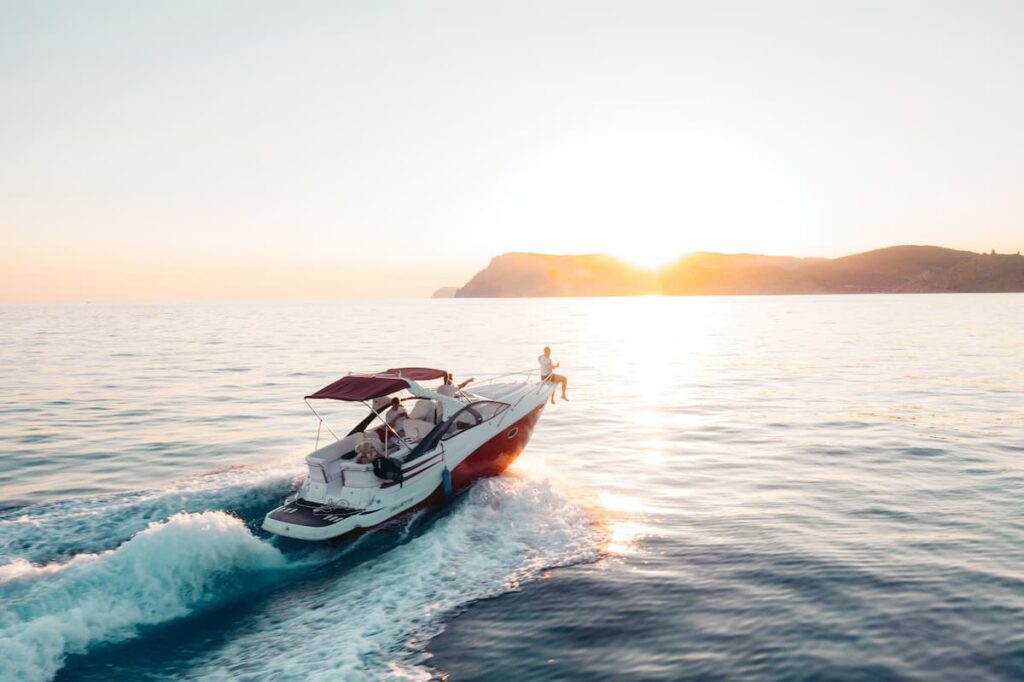
Calculating How Much Fuel Does a Boat Use Per Hour
To calculate fuel consumption, you need to know the fuel burn rate of the engine. The fuel burn rate is the amount of fuel the engine consumes per hour. You can calculate the fuel burn rate by dividing the engine’s horsepower by the fuel consumption rate.
For example, if an engine has a horsepower of 100 and consumes 10 gallons of fuel per hour, the fuel burn rate would be 10/100, which is 0.1 gallons per horsepower per hour.
Once you know the fuel burn rate, you can estimate how much fuel the boat will consume in a given period. For example, if the boat travels at a speed of 20 knots and has a fuel burn rate of 0.1 gallons per horsepower per hour, and the engine has 200 horsepower, the boat will consume 20 gallons of fuel per hour.
In conclusion, understanding fuel consumption in boats requires knowledge of several critical factors, including boat type and size, engine type and size, weight, speed, and weather and water conditions. Calculating fuel consumption involves determining the fuel burn rate of the engine and estimating how much fuel the boat will consume in a given period.
Types of Boats and Their Fuel Consumption
When it comes to fuel consumption, different types of boats have different requirements. Factors such as the boat’s size, weight, and speed all play a role in determining how much fuel it will consume per hour. Here are some common types of boats and their typical fuel consumption rates.
Fishing Boats
Fishing boats are typically smaller and slower than other types of boats, which means they use less fuel. On average, a fishing boat will use between 3 and 8 gallons of fuel per hour at cruising speed.
Pontoon Boats
Pontoon boats are popular for leisurely cruising and entertaining. They are larger than fishing boats and have a flat bottom, which makes them more stable. However, this also means they use more fuel. A pontoon boat will typically use between 5 and 15 gallons of fuel per hour at cruising speed.
Bass boats are designed for fishing and are typically smaller and faster than other types of boats. They are also more fuel-efficient, using between 3 and 6 gallons of fuel per hour at cruising speed.
Center Console Boats
Center console boats are versatile and can be used for fishing, cruising, and water sports. They are larger than bass boats and typically use between 10 and 20 gallons of fuel per hour at cruising speed.
Cabin Cruiser Boats
Cabin cruiser boats are designed for overnight trips and have a cabin with sleeping quarters and a bathroom. They are larger and heavier than other types of boats, which means they use more fuel. A cabin cruiser boat will typically use between 20 and 30 gallons of fuel per hour at cruising speed.
Bowrider Boats
Bowrider boats are popular for water sports and leisurely cruising. They are typically smaller than cabin cruiser boats but larger than fishing boats. A bowrider boat will typically use between 5 and 15 gallons of fuel per hour at cruising speed.
Overall, the fuel consumption of a boat depends on various factors such as boat size, weight, and speed. Understanding the fuel consumption of different types of boats can help you make an informed decision when choosing a boat that meets your needs while minimizing your fuel costs.
Engine Size and Power
Understanding horsepower.
When it comes to boat engines, horsepower is a crucial factor in determining how much fuel a boat will consume per hour. Horsepower is a measure of the engine’s power output, and it directly affects the speed and performance of the boat. The more horsepower an engine has, the faster the boat will go, but it will also consume more fuel.
How Engine Size Affects Fuel Consumption
Another important factor that affects fuel consumption is the engine size. The size of the engine is measured in horsepower, and it can range from small outboard motors with 9.9 hp to large inboard engines with over 300 hp. In general, larger engines consume more fuel than smaller engines, but they also provide more power and speed.
The type of engine is also important when it comes to fuel consumption. Two-stroke engines are known to be less fuel efficient than four-stroke engines, but they are also lighter and provide more power. Four-stroke engines, on the other hand, are more fuel efficient and produce less emissions , but they are heavier and provide less power.
The weight of the boat and the drag created by the hull also play a role in fuel consumption. Heavier boats require more power to move through the water, which means they will consume more fuel. Boats with a sleek, streamlined hull design will create less drag and require less power to move through the water, resulting in lower fuel consumption.
Here is a table that shows the average fuel consumption for different engine sizes:
| Engine Size | Fuel Consumption (Gallons per Hour) |
|---|---|
| 9.9 hp | 0.5 – 1.5 |
| 15 hp | 0.75 – 2 |
| 20 hp | 1 – 3 |
| 25 hp | 1.5 – 3.5 |
| 40 hp | 2.5 – 6 |
| 50 hp | 3 – 7 |
| 60 hp | 3.5 – 8 |
| 75 hp | 4 – 10 |
| 90 hp | 5 – 12 |
| 115 hp | 6 – 15 |
| 175 hp | 10 – 25 |
| 200 hp | 12 – 30 |
| 225 hp | 14 – 35 |
| 250 hp | 16 – 40 |
| 20 – 50 |
It’s important to note that these numbers are just averages, and actual fuel consumption will depend on a variety of factors, including boat weight , hull design, and weather conditions.
Cruising Speed and Fuel Efficiency
Understanding cruising speed.
Cruising speed is the speed at which a boat travels comfortably and efficiently. It is important to understand that cruising speeds vary depending on the type of boat, weather conditions, water conditions, and the number of passengers on board. In general, most boats have a cruising speed of around 20-30 knots.
When a boat is traveling at its cruising speed, it is operating at its most efficient fuel consumption rate. Going faster than the cruising speed can result in a significant increase in fuel consumption. On the other hand, going slower than the cruising speed can also result in increased fuel consumption as the boat struggles to maintain speed.
How to Optimize Fuel Efficiency
To optimize fuel efficiency, it is important to find the ideal cruising speed for your boat. This can be done by conducting a fuel consumption test. Take a piece of paper and make a table, or use a spreadsheet, listing out the rpm, speed in mph, and amount of fuel burned per hour, or gph. Divide the speed by the gph, and you’ll get mpg.
To further optimize fuel efficiency, consider the following tips:
- Reduce weight on board: The more weight on board, the more fuel the boat will consume. Remove any unnecessary items to reduce weight.
- Maintain the boat: A well-maintained boat will operate more efficiently and consume less fuel.
- Adjust trim: Adjusting the trim of the boat can help reduce drag and increase fuel efficiency.
- Monitor weather and water conditions: Rough weather and choppy waters can cause the boat to consume more fuel. Avoid these conditions when possible.
In conclusion, understanding cruising speed and optimizing fuel efficiency can help reduce fuel consumption and save money. Conducting a fuel consumption test and following these tips can help you find the ideal cruising speed for your boat and reduce fuel consumption.
Fuel Costs and Maintenance
Boat ownership comes with a set of responsibilities that extend beyond simply enjoying the water. One of the most significant factors to consider is the cost of fuel and maintenance.
Calculating Fuel Costs
Fuel costs are a significant expense for boat owners, and calculating them can be challenging. The amount of fuel a boat uses per hour depends on several factors, including the size and weight of the vessel, the type of engine, and the speed at which it is traveling.
Boat owners can use a fuel consumption calculator to estimate how much fuel their vessel will consume based on these factors. It is important to remember that fuel prices can vary depending on the marina and the type of fuel used.
Fuel-Efficient Boats
Fuel-efficient boats are becoming increasingly popular among boat owners due to the cost savings they offer. These boats are designed with fuel efficiency in mind and typically have smaller engines that consume less fuel.
Boat owners can also take steps to make their vessels more fuel-efficient, such as reducing their speed, maintaining their engines, and properly inflating their tires.
Maintenance Tips
Proper maintenance is crucial for keeping a boat in good working condition and minimizing fuel costs. Boat owners should regularly inspect their vessels for any signs of wear and tear and address any issues promptly.
Regular engine maintenance, such as oil changes and filter replacements, can also help improve fuel efficiency and reduce the risk of breakdowns. Boat owners should also ensure that their boats are properly cleaned and stored to prevent damage from the elements.
In conclusion, fuel costs and maintenance are significant expenses for boat owners to consider. By calculating fuel costs, investing in fuel-efficient boats, and practicing proper maintenance, boat owners can minimize their expenses and enjoy their vessels for years to come.

Frequently Asked Questions
What is the average fuel consumption for a boat per hour.
The average fuel consumption for a boat per hour varies depending on several factors such as the size and type of the boat, the engine’s horsepower, and the speed at which the boat is traveling. As a general rule of thumb, a small boat with a 25-horsepower engine can consume around 2-3 gallons of fuel per hour, while a larger boat with a 200-horsepower engine can consume around 20-30 gallons of fuel per hour.
How do I calculate fuel usage for a boat trip?
To calculate fuel usage for a boat trip, you need to know the boat’s fuel consumption rate, the distance to be covered, and the speed at which you will be traveling. You can use an online fuel consumption calculator or a fuel flow meter to determine the boat’s fuel consumption rate. Once you have this information, you can estimate how much fuel you will need for your trip.
What is the fuel efficiency of a 26-foot boat?
The fuel efficiency of a 26-foot boat depends on several factors such as the boat’s weight, the engine’s horsepower, and the speed at which the boat is traveling. On average, a 26-foot boat with a 250-horsepower engine can consume around 20-25 gallons of fuel per hour at cruising speed.
How much fuel does a 50-foot boat use per hour?
The amount of fuel a 50-foot boat uses per hour depends on several factors such as the boat’s weight, the engine’s horsepower, and the speed at which the boat is traveling. On average, a 50-foot boat with a 500-horsepower engine can consume around 50-60 gallons of fuel per hour at cruising speed.
How much diesel fuel is consumed per horsepower?
On average, a diesel engine consumes around 0.4 pounds of fuel per hour for each unit of horsepower it produces. For example, a 200-horsepower diesel engine would consume around 80 pounds of fuel per hour.
How far can a boat travel on a full tank of gas?
The distance a boat can travel on a full tank of gas depends on several factors such as the boat’s fuel consumption rate, the size of the fuel tank, and the speed at which the boat is traveling. On average, a boat can travel around 100-200 miles on a full tank of gas. However, this can vary significantly depending on the boat’s size, weight, and engine horsepower.
- Recent Posts
- Responsibilities of a Fourth Engineer on Cargo Ships – September 10, 2024
- The Role of Cargo Ships in Global Trade – August 22, 2024
- Report: Yang Ming’s YM Mobility Explosion at Ningbo-Zhoushan Port – August 9, 2024
About the author
I worked as an officer in the deck department on various types of vessels, including oil and chemical tankers, LPG carriers, and even reefer and TSHD in the early years. Currently employed as Marine Surveyor carrying cargo, draft, bunker, and warranty survey.
Latest posts

Is Maritime Security Necessary on Modern Ships?
It’s vital for ships to stay vigilant. Isolation from land means having no backup or protection for miles, making them vulnerable to attacks and other threats. Equip modern ships using modern maritime security methods.
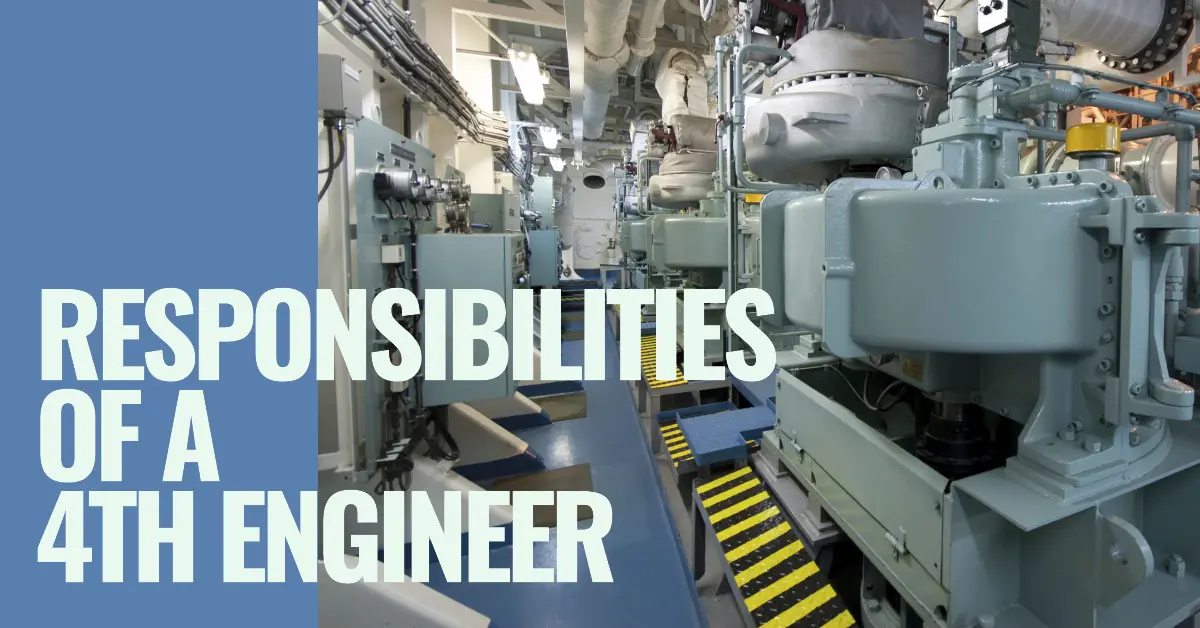
Responsibilities of a Fourth Engineer on Cargo Ships
A Fourth Engineer on cargo ships oversees engine room operations, machinery maintenance, and ensures compliance with regulations like MARPOL.

The Quality Control Process in Marine Manufacturing
Companies in the marine manufacturing space must have tight and effective quality control processes. What steps should an effective quality control process include?
- 2024 BOAT BUYERS GUIDE
- Email Newsletters
- Boat of the Year
- 2024 Freshwater Boat and Gear Buyers Guide
- 2024 Boat Buyers Guide
- 2024 Water Sports Boat Buyers Guide
- 2024 Pontoon Boat Buyers Guide
- Cruising Boats
- Pontoon Boats
- Fishing Boats
- Personal Watercraft
- Water Sports
- Boat Walkthroughs
- What To Look For
- Watersports Favorites Spring 2022
- Boating Lab
- Boating Safety
- Ultimate Boating Giveaway

Calculating Boat Fuel Consumption
- By Brett Becker
- Updated: September 30, 2019
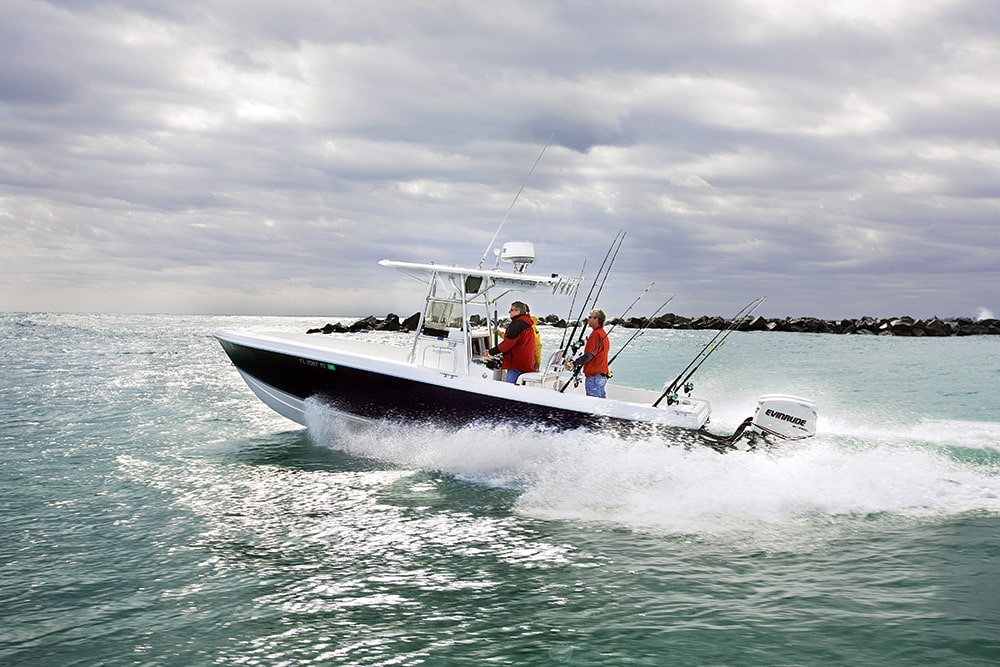
Calculating a boats fuel consumption proves important to boaters for number of reasons. With knowledge of a boat’s fuel economy-how much fuel the boat burns per mile or nautical mile of travel-boaters can estimate the range they can safely expect to run.
Some boaters go as far as to develop a boat fuel consumption chart for their boat. You can use any Boating boat test as a model for this. Of course, you can also install a fuel consumption monitor if your boat’s engine does not provide a fuel consumption readout.
Additionally, knowing your boat’s fuel consumption provides a good idea of how much it will cost you to operate the boat. When shopping for a new boat or marine engine, fuel consumption provides a major basis of comparison.
Estimating Your Boat’s Fuel Burn
It’s a different story with a boat. Since sea conditions vary more widely than road conditions, the time it takes to cover a distance varies more, so fuel consumption is measured in gallons per hour. Also, while many engines have fuel flow readouts , the ability to estimate fuel burn while shopping for a boat or engine is important. You measure fuel efficiency in pounds of fuel used per horsepower developed per hour. The pros call it “brake-specific fuel consumption.” This makes it important to know that gasoline weighs about 6.1 pounds per gallon and diesel fuel 7.2 pounds per gallon.
On average, an in-tune four-stroke gasoline engine will burn about 0.50 pounds of fuel per hour for each unit of horsepower. Likewise, a well-maintained diesel engine burns about 0.4 pounds of fuel per hour for each unit of horsepower it produces. These figures don’t take drag of the boat, sea conditions, or efficiency losses through transmissions and bearings into account. But they provide an excellent relative difference between engines when shopping.
Confused yet? Look at the mathematical examples below, and a boat’s fuel economy should become clear.
Boat Fuel Consumption Formulas and Calculator
Below is the Formula to Estimate Maximum Engine Fuel Consumption.
GPH = (specific fuel consumption x HP)/Fuel Specific Weight
Constants | Gas | Diesel SFC: .50 lb. per HP | .40 lb. per HP FSW: 6.1 lb. per gal. | 7.2 lb per gal.
300-hp Diesel Engine Example GPH = (0.4 x 300)/ 7.2 = 120/7.2 = 16.6 GPH
300-hp Gasoline Engine Example GPH = (0.50 x 300)/ 6.1 = 150/6.1 = 24.5 GPH
Keep in mind that these formulas apply when the engine is making peak horsepower, which usually is near wide-open throttle. Fuel consumption will be decreased at cruising speeds. Also remember that engines with electronically-managed fuel injection and direct injection will yield higher fuel efficiency .
To apply these formulas to your boat, just plug in its horsepower rating and multiply it by the specific fuel consumption average, then divide the product by the fuel specific weight.
Another way is to take the total engine horsepower and divide it by 10 for gas engines or .06 for diesel engines. As you can see, this formula is simpler to calculate and easier to remember. You don’t even need a pencil and paper. It’s just not as accurate as the formulas above. The result represents the approximate gallons per hour the engine will burn at wide-open throttle. For example, a 150-horse engine will use about 15 gallons per hour. Though these figures represent averages and can vary from 10 to 20 percent, they’ll put you in the ballpark so you can plan a long-distance cruise without fear of running out of gas . You can also keep track of your boat’s fuel consumption by installing a fuel monitor.
- More: Engines , fuel consumption , How-To
More How To

On Board With: Monique Richter
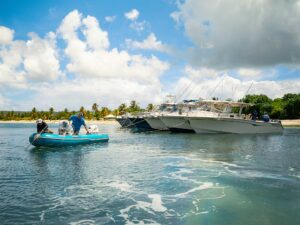
Grady-White Pulls off Its Largest Raft-up Ever in Vieques, Puerto Rico
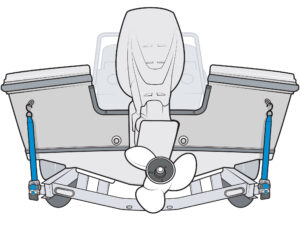
Installing Retractable Transom Straps
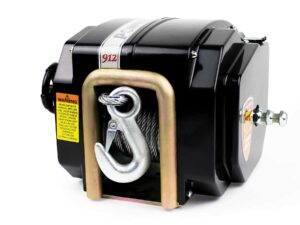
How to Choose a Trailer Winch
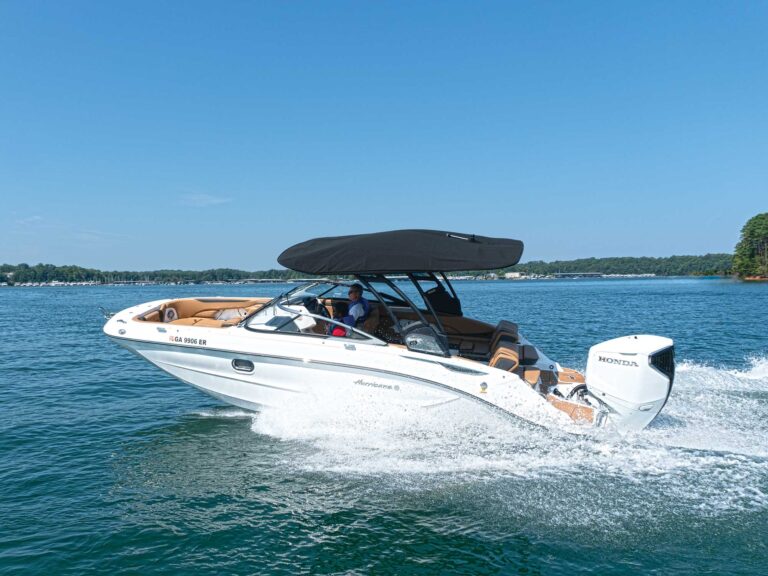
Boat Test: 2024 Hurricane SunDeck 2600 OB
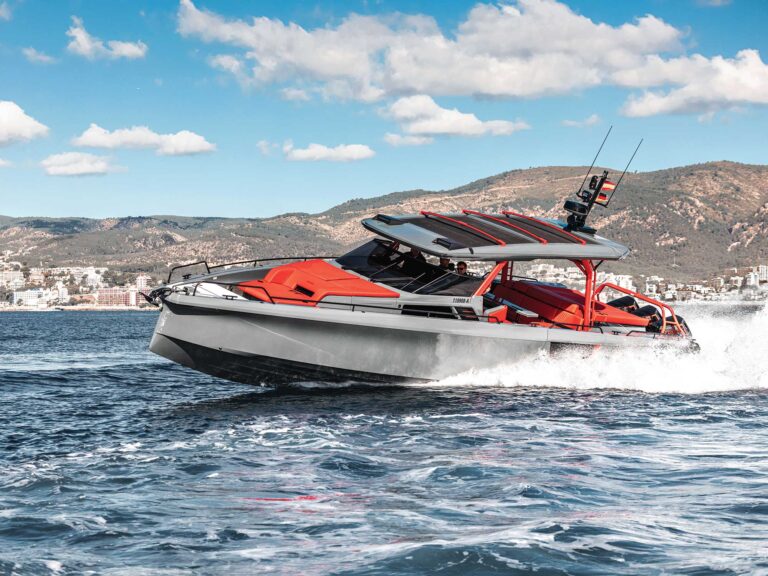
Boat Test: 2024 Brabus Shadow 1200 Sun-Top
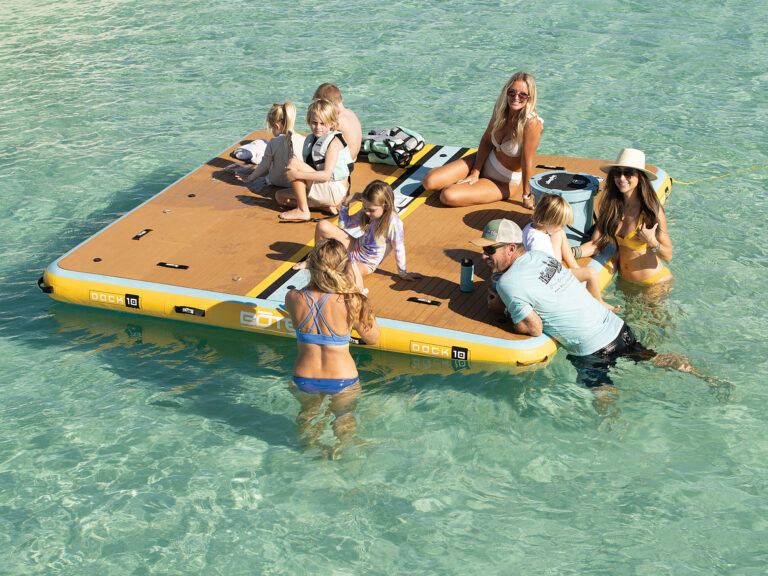
Inflatable Water Mats for Boaters
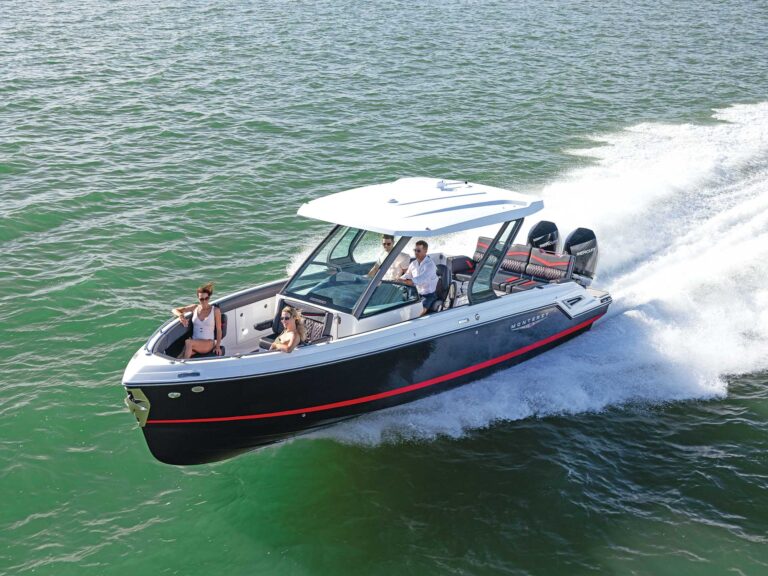
Boat Test: 2024 Monterey Elite 30

- Digital Edition
- Customer Service
- Privacy Policy
- Terms of Use
- Cruising World
- Sailing World
- Salt Water Sportsman
- Sport Fishing
- Wakeboarding
Many products featured on this site were editorially chosen. Boating may receive financial compensation for products purchased through this site.
Copyright © 2024 Boating Firecrown . All rights reserved. Reproduction in whole or in part without permission is prohibited.

About The Fuel Consumption Calculator

Let’s face it. Boating is fun, but filling up at the marina (or even from your own fuel cans) can get expensive quick. Especially with the high cost of fuel these days.
It would be nice to know if there was a simple way to reduce your fuel consumption without cutting back on your boating enjoyment. Fortunately, there is and that is exactly why I created the free boat fuel consumption calculator.
With it, you can calculate your engine fuel consumption and the cost of fuel for a single trip and for the entire season. You can even do “what if” comparisons to see how a change in operating speed could save you money at the pump. Having an understanding of your boat’s basic fuel consumption curve will help you find that operating speed “sweet spot” where you’re still having fun and getting where you need to go, but with a little extra cash in your pocket.
Get the Fuel Calculator
Fill out the form below to get immediate access to the Fuel Consumption Calculator.
By clicking the Submit button below, you will get immediate access to the Fuel Consumption Calculator and agree to receive the monthly BoaterInput newsletters. We promise, no spam or junk mail, just valuable boating information and you can unsubscribe anytime.
Why Did I Build This Tool?
To be honest, I built this tool because no one else has built one. And, because I think knowing your fuel consumption is helpful in several situations:
- When your buddies are offering to “help” with gas and want to know how much to chip in. Now you can easily let them know what the actual tab is (which is likely more than they were anticipating)
- You are interested in reducing the cost of using your boat. This tool will help you figure out how small changes in your operating speed can add up to substantial savings.
- You are wondering how big of a boat to buy . A 21′ bass boat with a 250 HP engine would be cool but my smaller boat with a 150 is much more economical. In fact, the fuel consumption calculator estimates that I save over $800 a year by going with 100 fewer ponies. That equates to several more rod/reel combos and far fewer trips lugging gas down to the dock.
- You want to better understand the ongoing costs of boat ownership. Are you someone who likes to follow a household budget? Or are you contemplating buying your first boat and are wondering if you can afford the ongoing expense? This tool will help you plan your budget to minimize surprises.
So, if any of these reasons interest you, click on button to request access to the fuel consumption calculator. Best of all, it is completely free!

How Did I Design The Tool?

In order to estimate fuel consumption, I needed three inputs and a little algebra.
The first input was fuel consumption per horsepower . As it turns out, gas engines consume approximately 0.5 lbs of fuel per horsepower per hour at wide open throttle (WOT). Diesel engines consume slightly less (0.4 lbs). This assumes a properly running, well-tuned engine. Of course, unlike meat and produce, you don’t buy gas by the pound but by the gallon. So, to convert fuel consumption into gallons, you simply divide by the fuel weight of 6.1 lbs per gallon for gasoline and 7.2 lbs for diesel. But this still doesn’t get us where we need to be. That is because, unless you are a boat racer, most do not run their engine at WOT 100% of the time. Therefore, we need to account for reduced fuel consumption at lower RPM ranges.
This takes us to our second input – the relative rate of fuel consumption across the RPM band . For this, I examined the fuel consumption curves for a variety of engine brands – including Mercury, Yamaha, Honda and Suzuki Outboards. I even looked at data for MerCruiser and Volvo sterndrive (also known as I/O) engines. For each engine type, I compared the fuel consumption curves for multiple engine sizes ranging from 25 HP to 425 HP for Outboards and 3.0L to 8.2 L for Sterndrives.
The third, and final, input needed is user-supplied data on how long, how often and at what speed you typically operate your engine(s) . For this last item, I break things down into four categories for simplicity: Idle speed (between 500 and 1,000 RPMs) that is often used when docking or going through no-wake zones, Half Throttle (around 3,000 RPMs) which is often enough to hold a boat on plane, Three-Quarters throttle (~4,500 RPMs) and then WOT (~6,000 RPMs) .
In examining all of this data, I discovered two key things: 1) though the total fuel consumption varies by engine size, the relative rate of consumption is fairly constant. In other words, whether you are looking at a 25 HP or 250 HP, the proportion of fuel consumed at various RPM ranges in comparison to WOT does not vary much. And 2), the rate of fuel consumption is not linear across the RPM band. For example, at half throttle (roughly 3,000 RPMs), you are only consuming about 30% of the fuel that you would at WOT (approximately 6,000 RPMs). At three-quarters throttle, the rate is about 60%. This is significant because it tells you that the last quarter of the throttle is far less efficient and key to saving you money on fuel.
Try my free tool and find out for yourself how small changes in your boat usage can really add up to big savings.
How to Use the Fuel Consumption Calculator
Using the tool is very simple.
The first thing you need to do is choose whether you want to estimate “Fuel Consumption only” based on your current usage OR “Also do What If Comparisons” to see how changes in your operating speed impacts your fuel economy.
Next, enter your engine parameters (size, number of engines, gas vs. diesel) and usage frequency (number of trips per year and average engine running time per trip) along with your average price for fuel.
Finally, specify the approximate percent of time you use your engine per outing at Idle speed, Half throttle, Three-Quarters Throttle and WOT. If you chose to do “What Ifs”, you will need to specify the percent of time based on your current usage and an alternative usage scenario.
The calculator will then estimate the Gallons consumed per Outing , the Fuel Cost Per Outing , and the Total Fuel Cost Per Year . If you ran a “What If” scenario, you will also see the potential savings .
Give the tool a try and let me know what you think.

Be a Beta Tester…And Give Me Your Feedback!

This is a brand-new tool and unlike anything else available online.
It is still in beta-testing mode and so I would love it if you tried it and gave me your feedback. Are the results consistent with your experience? Is it easy to use? Is there anything else you would like to see? If you are willing to share your experience, I’ll continue to “tweak” the tool to make it even better.
My goal is to help boaters save money and increase their boating enjoyment. After all, if you are spending less on gas, that leaves more for tackle, gear and accessories, right?
Click on the button to access my free tool and let me know what you think.
what our members are saying about their boats
“This boat gives you a fast, dry, and smooth ride.” (Overall Rating: 10)
“Wide beam and large cockpit. Love the open feel.” (Overall Rating: 9)
“The Formula brand is a well-built boat that uses high end components and has things such as fume detection for the bilge and other items like that are not seen on other brands. The seats are very comfortable and both interior and exterior are holding up extremely well. The boat handles great and has a very solid ride.” (Overall Rating: 10)
“Not many people are very familiar with Bryant but they build a quality boat that is a bit more affordable than some of the other premium names. I have had this boat 5 years now and it looks great and rides well.” (Overall Rating: 9)
“It’s the best all-weather boat I’ve owned for lakes. Handles just about anything that’s marginal to get back to the ramp safely. And plenty of storage room, actually it could be too much room at times.” (Overall Rating: 10)
“When I bought it , it was probably the best deal one could find for a fiberglass bass boat with absolutely no wood in it. The boat and Yamaha 70 have performed flawlessly for 12 years.” (Overall Rating: 10)
“This model falls into the category that most salt water fishermen refer to as “Bay Boat”. It has a center console which provides tremendous stability and a deeper hull than a “flats” boat for smoother ride on choppy water. The boat is made for fishing and has very few comfort features for cruising. It is not my favorite hull because it draws a little more water than some of the other shallow water bay boats such as Pathfinder.” (Overall Rating: 9)
“Great boat, solid ride… great bay boat for fishing. Fast with Yamaha 300!!” (Overall Rating: 10)
“Excellent high-end Pontoon Boat with a 400hp R Mercury outboard Racing motor. Too nice to be a Pontoon Boat. Rear twin electric recliners.” (Overall Rating: 9)
“We had a lot of fun using this boat the past summer. it can accommodate nine persons, has comfortable seating for all passengers, is easy to board for both passengers and water skiers, handles well in rough water, is easy to launch and dock, looks great on the water and drew lots of compliments from all who saw it on the water.” (Overall Rating: 10)
“Great boat and a great price point. Carolina flare and deadrise makes for an exceptionally dry boat which I would expect from any Carolina boat builder that builds primarily for the Atlantic. This is not a shallow draft boat for its size, however….I would say it drafts in 12″ +.” (Overall Rating: 8)
Join Our Community
Sign up for our newsletter and get access to the most recent content, as well as opportunities to participate in community surveys.
Help us grow our knowledge base
If you are looking to purchase a boat, be sure to check out the boating reviews left by other boat owners.
If you already own a boat, be sure to share your experiences by submitting a review so others will benefit from it.
BoaterInput.com
Email: [email protected]

Follow us on:
Terms Of Use | Privacy Policy | Copyright Left Brain Marketing, 2023
Helpful? Subscribe to the Free BoaterInput Monthly Newsletter
- Receive the latest reviews and insights
- Participate in studies to earn gift cards
- Only 1X per month
- Your email is NEVER shared with anyone
Your source for the latest news on yachts, boats and more. Read through our articles to find out how to compare boats and find the right fit for you!
Measuring your Yacht Fuel Consumption per Hour
Oct 10, 2019
less than a min
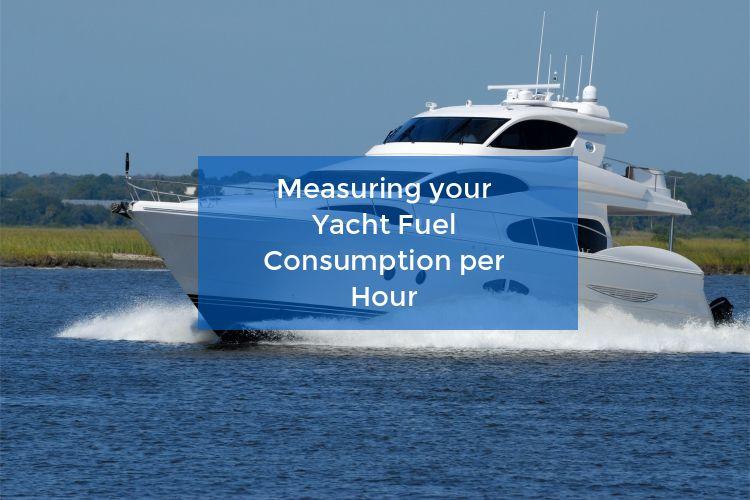
How to measure your yacht fuel consumption per hour
Yachts are quite similar to other vehicles in the sense that they work through fuel. Similarly to any other vehicle, it is important to calculate the yacht fuel consumption per hour before you plan a trip or before you purchase a vessel. Fuel consumption is also a good comparison base between boats. Whether before going on a trip, or buying a yacht, you need to have all the facts straight and know how much money you are going to invest not only at once upon purchase but also periodically.
There are different factors in the fuel consumption of a yacht. For example, if you use a generator or if you stay at anchor instead of docking, the fuel consumption will be increased . The itinerary will change fuel consumption as well. Sea is different than roads and the conditions in a sea change more dramatically than on land, which also impacts fuel consumption.
Fuel consumption for boats is measured in gallons per hour . The efficiency of boat fuel is measured in pounds of fuel that are used in an hour per horsepower. In order to be able to read the calculation right, any boat owner should know that gasoline is almost 6.1 pounds per gallon while diesel is 7.2 pounds per gallon .
Usually, if you consider that all sea conditions are pristine, the fuel consumption of a normal diesel engine is 0.4 pounds per hour for each unit of horsepower.
How to calculate yacht fuel consumption
Calculating it by hand is complicated, which is why many people choose to use online calculators . The way it works is it allows you to put down certain parameters that calculate the fuel consumption. These parameters include route , units of measurement and engine power .
Lastly , what most people are interested in is actually the cost of fuel consumption per hour. So the last parameter to include is the current price of fuel . Marine websites usually include this price up to date.
Another step that people have taken is develop a boat fuel consumption chart for their own boat and find the average in a month.
Alternatively, there is a formula that calculates the maximum fuel consumption of the engine which is:
GPH = (specific fuel consumption x HP) / The specific weight of fuel
This formula determines the fuel consumption when the engine is at full speed . If the speed is decreased then the fuel consumption is decreased as well. Basically, what you need to do is include the horsepower rate of the boat and you multiply it by the specific fuel consumption average and you divide that product by the weight of the fuel.
If you want to compare your boats GPH with other boats than you can use TheBoatDB database. If you already have a boat you can register for free and compare it with other boats within the database.
These are simple methods to calculate fuel consumption, however for a precise one you would have to know all the specifics of your boat and put the parameters through the calculator.
You might like these too

What is a Chine on a Boat
Oct 01, 2021
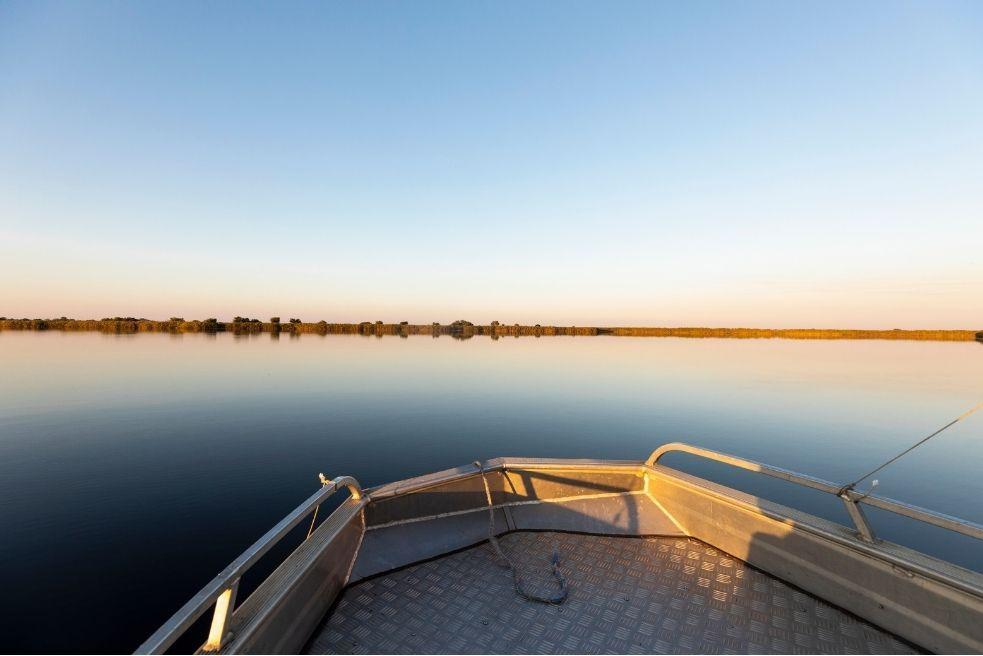
Flat Bottom Boat Advantages
Sep 30, 2021

Shoal Keel Sailboats Advantages and Disadvantages
Sep 13, 2021
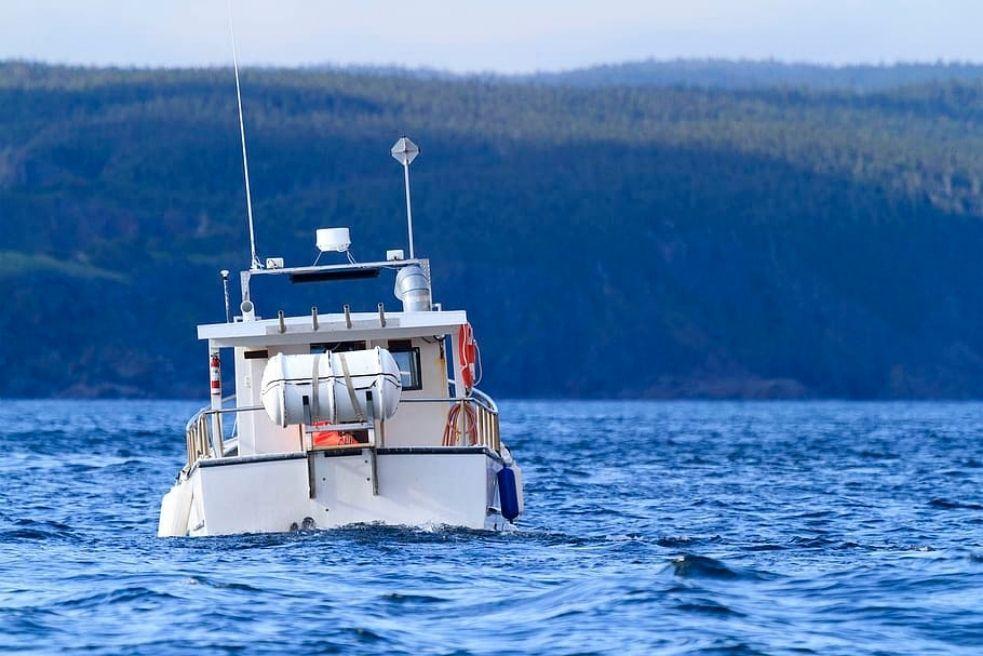
Shallow Draft Boats Explained
Sep 06, 2021
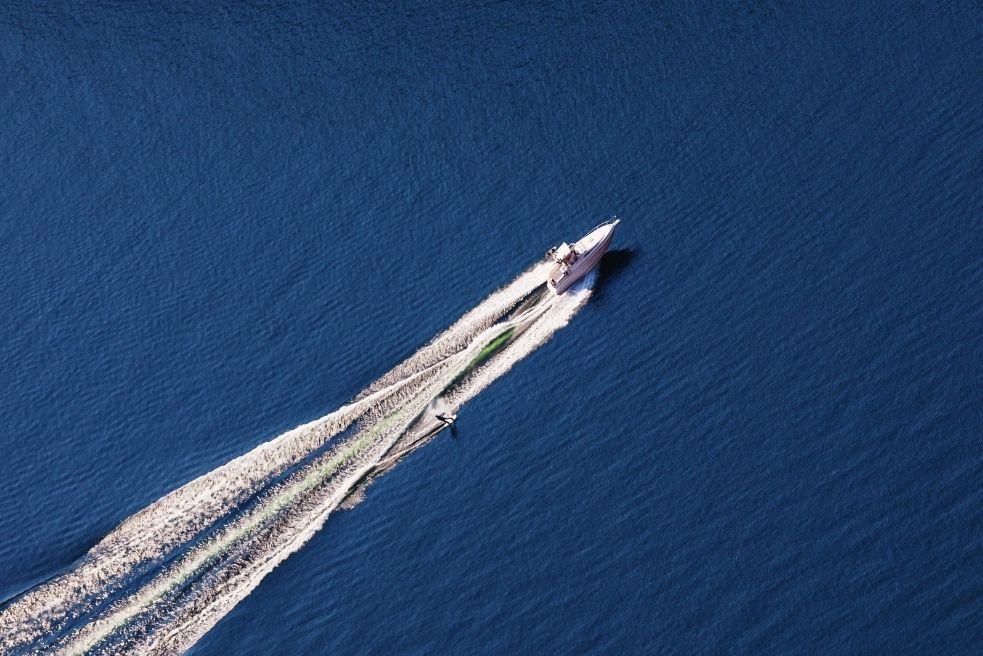
Best Boat for Open Ocean Sailing
Aug 27, 2021
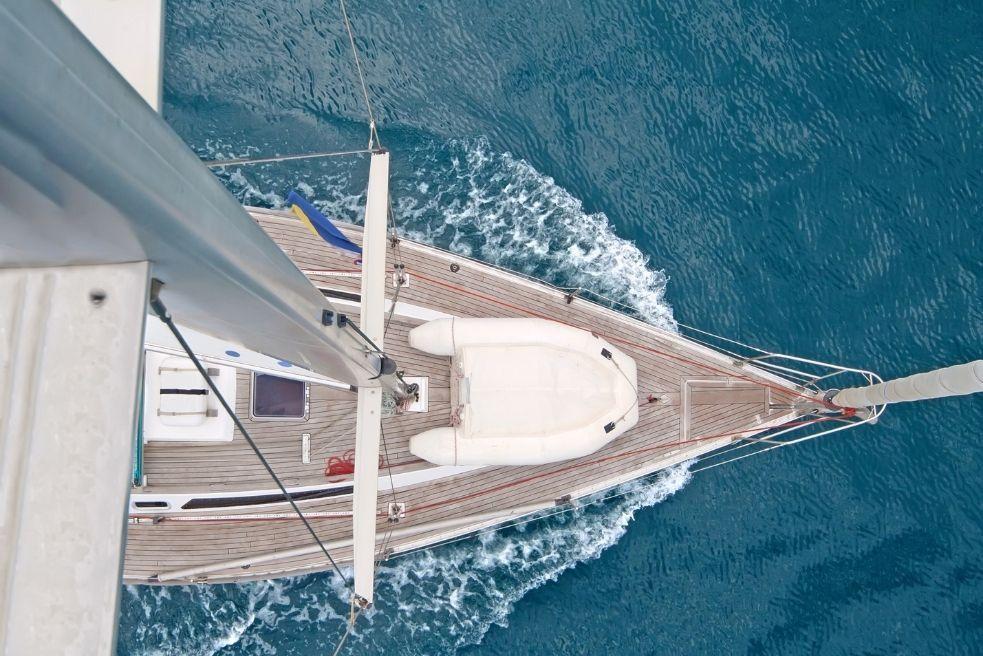
Best Boat Design for Rough Water
Aug 25, 2021
Visit our Popular Forums
- Monohull Sailboats
- Multihull Sailboats
- Powered Boats
- General Sailing
- Antares Yachts
- Fountaine Pajot
- Lagoon Catamarans
Cruising Business
- Boat Classifieds
- General Classifieds
- Crew Positions
- Commercial Posts
- Vendor Spotlight
Life Aboard a Boat
- Provisioning: Food & Drink
- Families, Kids, & Pets Afloat
- Recreation, Entertainment, & Fun
- Boat Ownership & Making a Living
- Liveaboard's Forum
Seamanship, Navigation & Boat Handling
- Seamanship & Boat Handling
- Training, Licensing, & Certification
- Health, Safety, & Related Gear
- Rules of the Road, Regulations, & Red Tape
Engineering & Systems
- Const. / Maint. / Refit
- Product / Service Reviews
- Electronics: Comms / AV
- Electrical: Batts / Gen / Solar
- Lithium Power Systems
- Engines & Propulsion
- Propellers & Drive Systems
- Plumbing / Fixtures
- Deck Hdw: Rigging / Sails
- Aux. Equipment & Dinghy
- Anchoring & Mooring
Photo Categories
- Member Galleries
- Life Onboard
- Sailing in the Wind
- Power Boats
- Cruising Destinations
- Maint. & Boat Building
- Marine Life
- Scuba Diving & Divers
- General Photos
Recent Photos

Listing Categories
- African Cats
- view more »
- Crew Wanted
- Crew Available
- Enhance Your Account
- Meet the Mods
- Meet the Advisors
- Signup for The Daily Cruiser Email

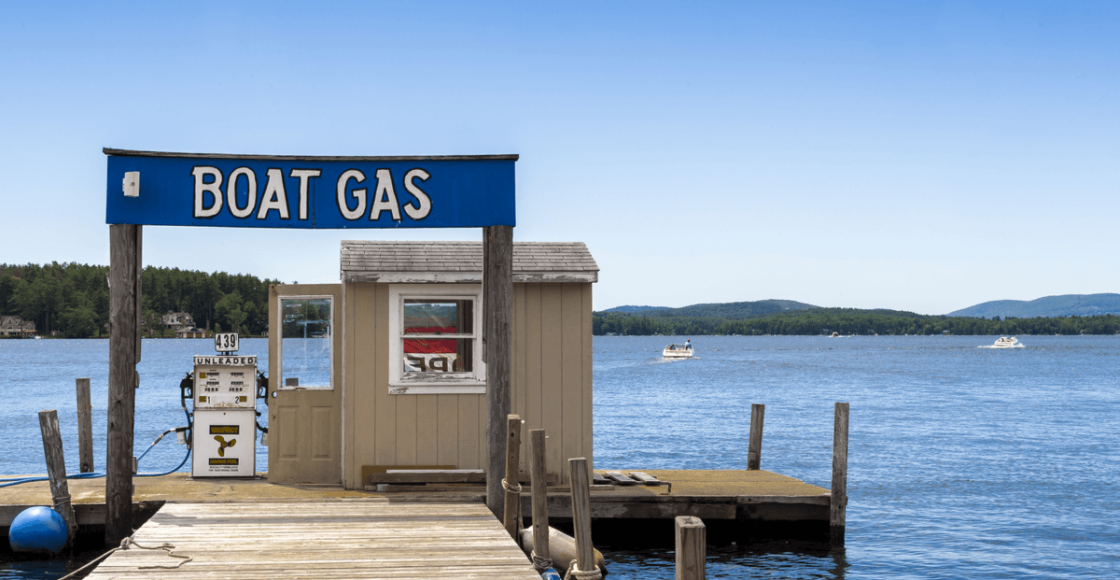

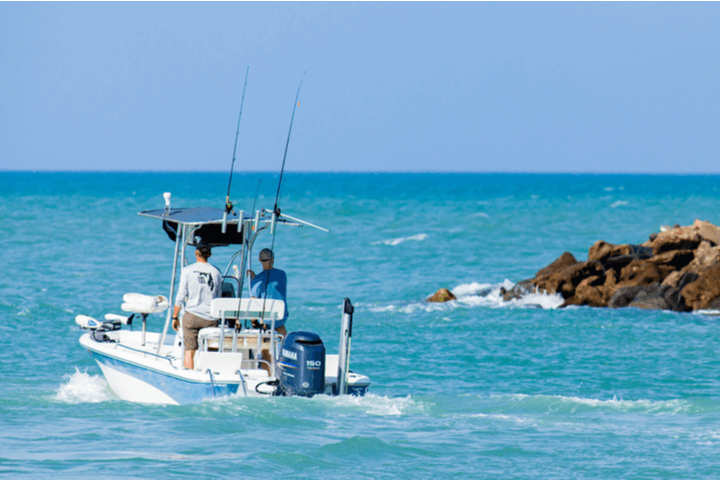
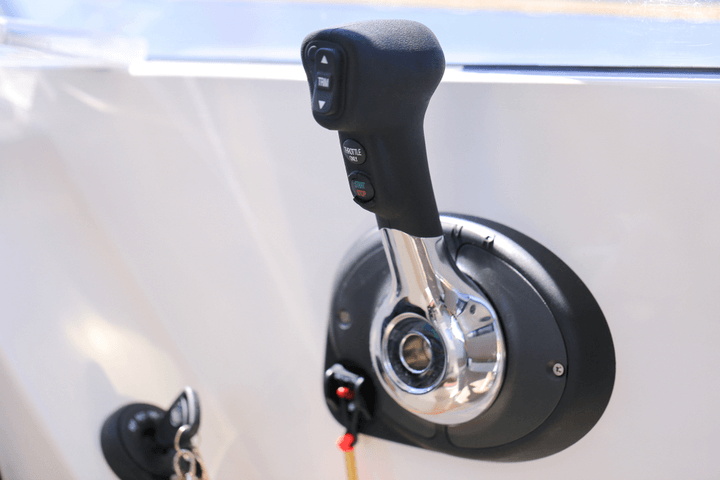
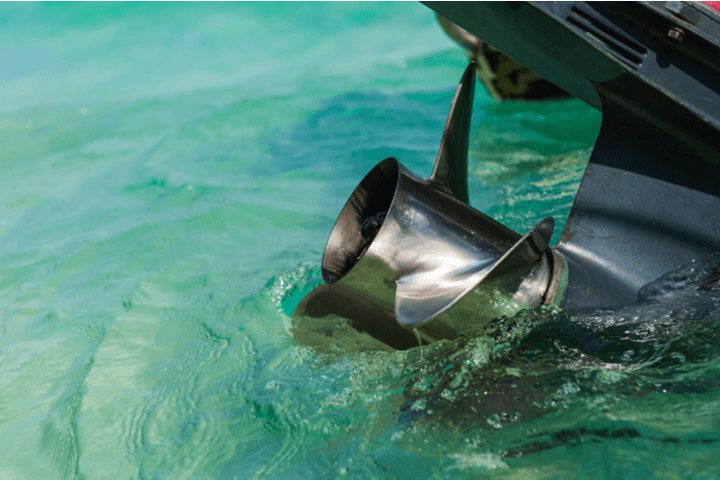


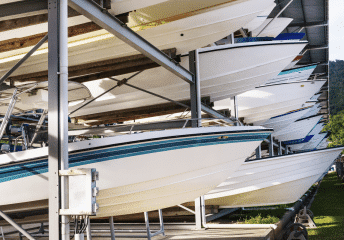

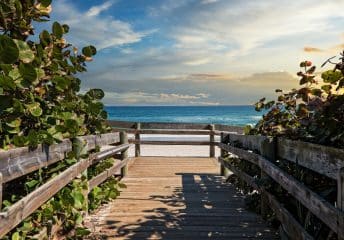


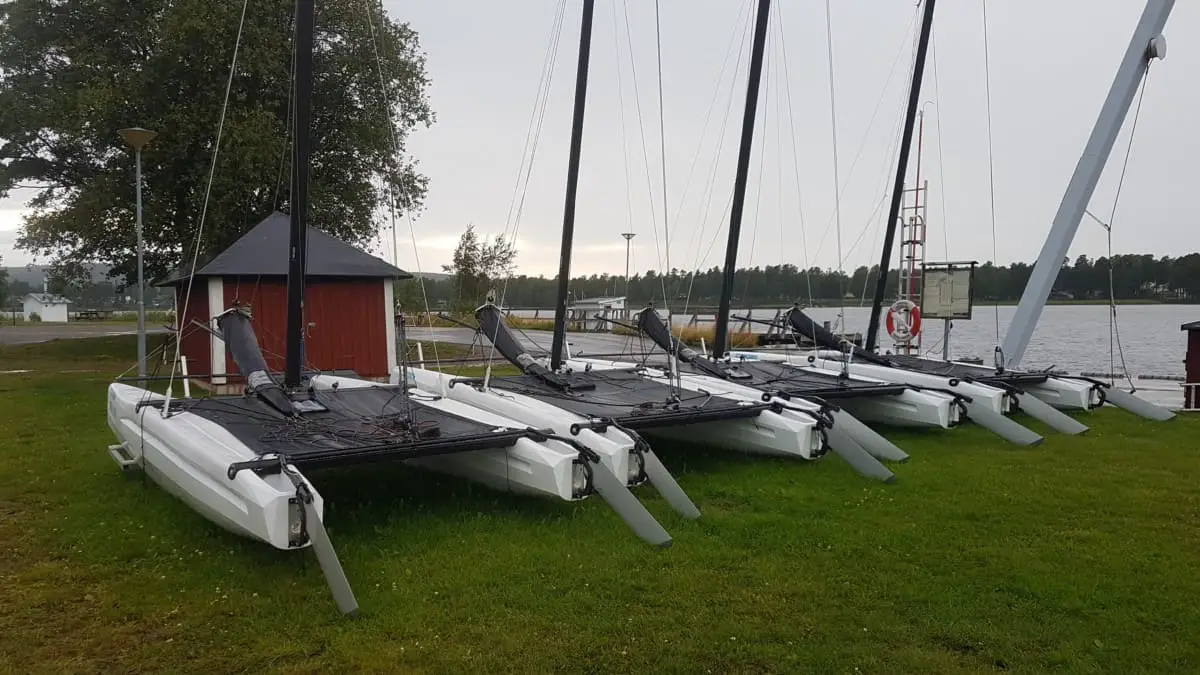
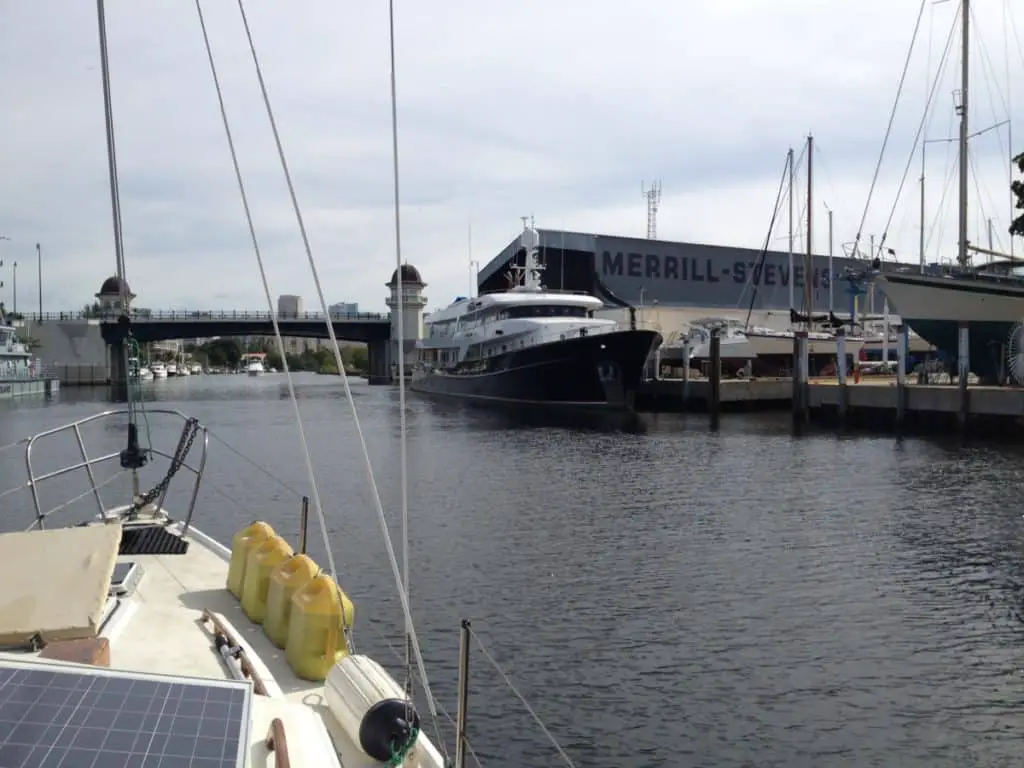
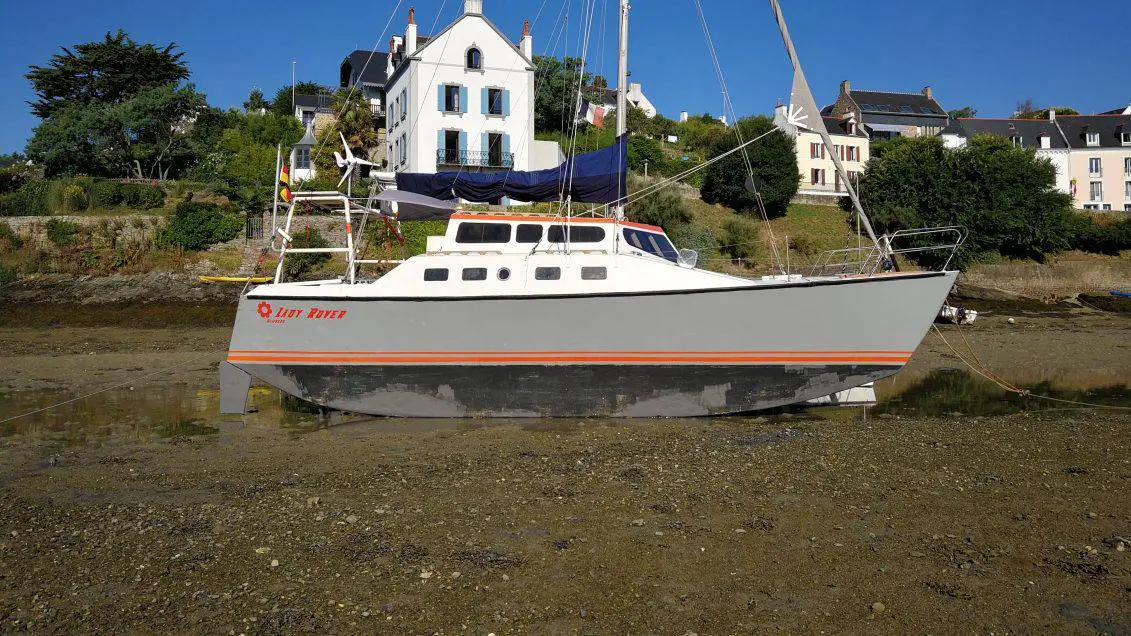
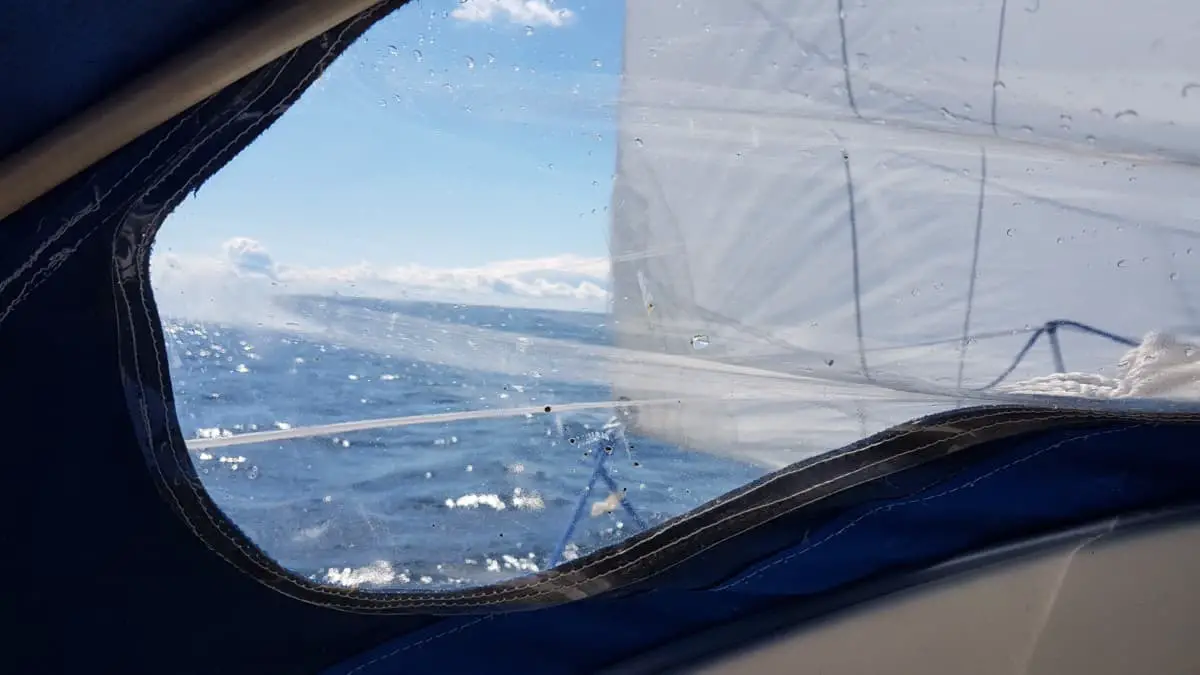
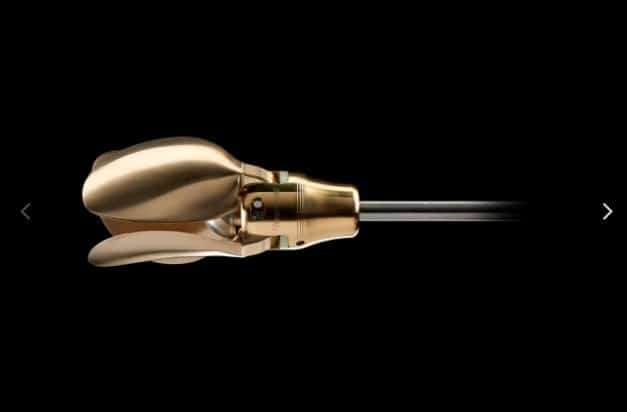
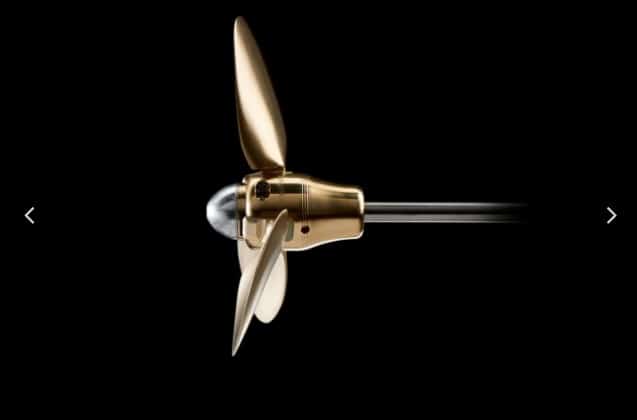
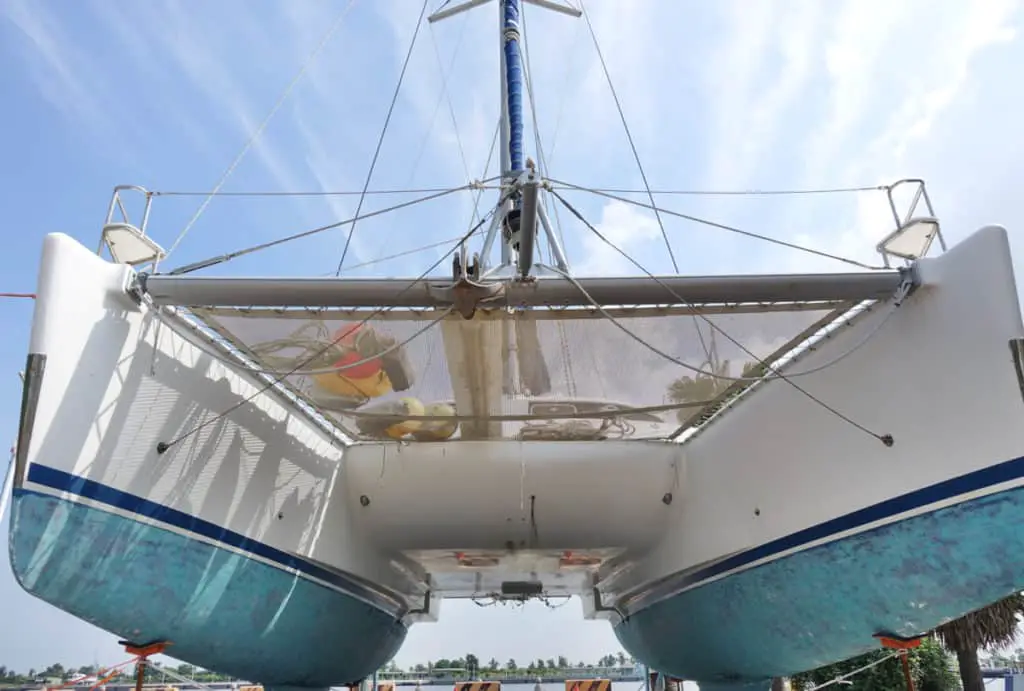
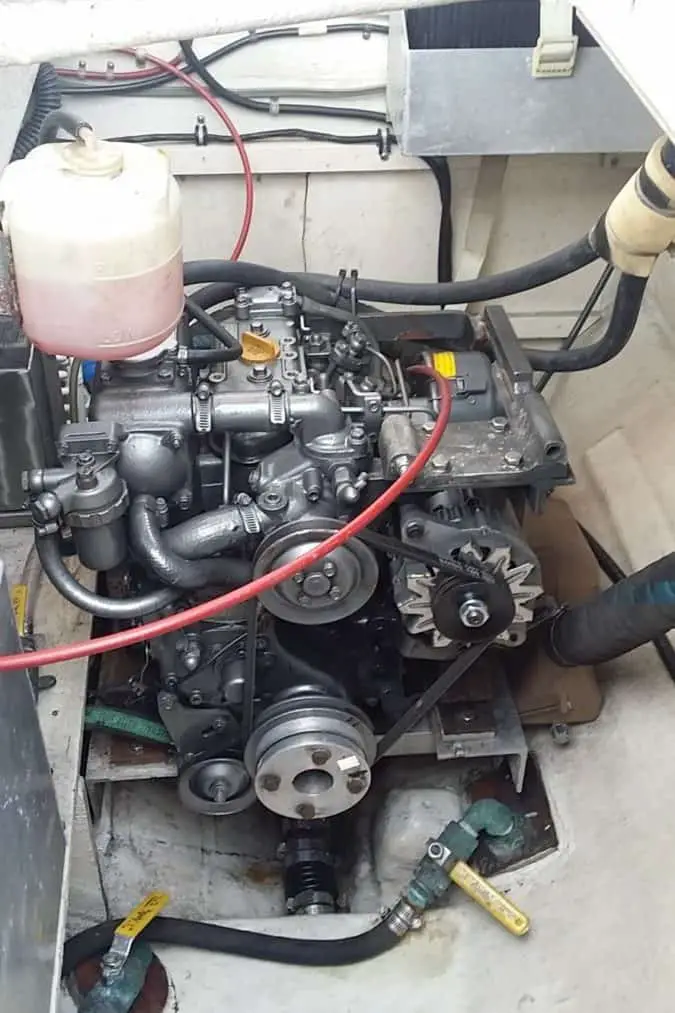
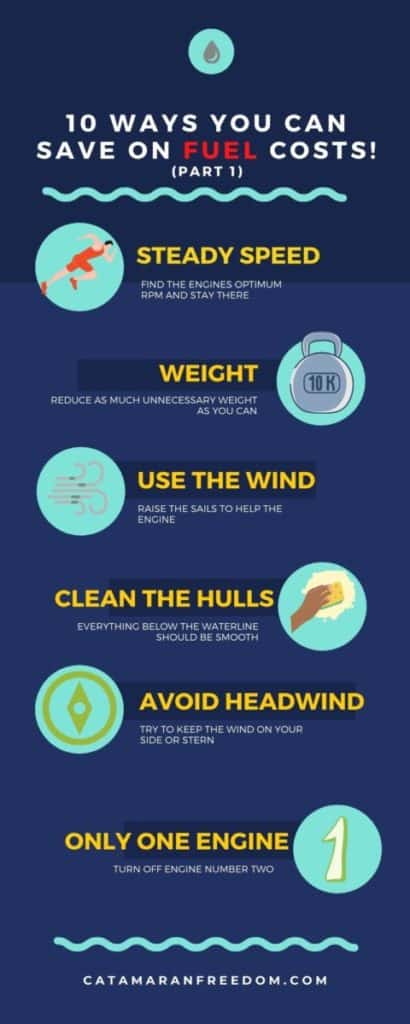

IMAGES
VIDEO
COMMENTS
Let's look at some actual numbers from a full-displacement trawler in the 40- to 50-foot range: 7.5 knots @ 3 GPH = 2.5 nMPG. If we push for a little more speed the fuel burn changes: 9 knots @ 11 GPH = 0.8 nMPG. Notice that by slowing down 1.5 knots, this boat increases its fuel economy almost 300%. Semi-displacement
My sailing catamaran can cruise at 6 knots on about 3 liters per hour and 1 engine or 7 knots on 6 liters per hour with both engines running. This boat comes in a power version that has twin 315 hp engines standard and carries 500 gallons of fuel.It of course can go much faster than 6 knots. One option might be to see if a power cat manufacturer would put a sailboat sized engine or maybe just ...
As a result, it's difficult to generalize fuel consumption for all 50-foot boats. However, to provide an estimated range, we can assume the following average fuel consumption rates for 50-foot boats under varying conditions: 3-5 GPH at idle speed. 10-25 GPH at cruising speed (typically around 20-30 knots) 20-60 GPH at high speeds (over 30 ...
Hi all, I'm delivering a 2019 Lagoon 50 to Tahiti from Tortola (BVI) and the owner has no information on fuel consumption, range, etc. The boat holds 1020 Litres in 2 tanks. Any help appreciated. May. live data. lagoon 52 fuel consumption: 22 l/h average. but this is a charter boat and VOLVO 2 X 75 HP.
Let's look at an example. For a 70-foot yacht cruising at a moderate speed of 20 knots, fuel consumption could be around 50 gallons per hour. If you're planning a 100-mile journey, at 20 knots, it would take you approximately 5 hours. This means the total fuel consumption for the trip could be around 250 gallons. Tips for Reducing Fuel ...
On average, a 50-foot yacht with twin diesel engines will use about 20-30 gallons of fuel per hour, while a gasoline-powered yacht will use about 40-50 gallons per hour. Routine maintenance such as oil changes, filter replacements, and hull cleaning is part of the overall operating costs and will cost several thousand dollars per year.
Our Commitment. Blog. Yachts Zenith Nautic S.L. VAT Number: B56880875. Address: Avenida Sant Jordi, 48. Ibiza, Spain. Discover accurate boat fuel consumption with our Boat Fuel Calculator and comprehensive list, helping you plan your yacht charter fuel costs effectively.
Quote: On a displacement boat of 40 - 50 ft your best fuel economy will most likely be a bit under hull speed, or about 6 - 8 knots. On Lifeline we travel at 7 knots at 1150RPM, which gives us fuel economy of 8 litres (2 US gallons) per hour or about 3 tenths of a gallon to go 1 nautical mile.
Welcome to the West Nautical Fuel Calculator. HOW TO USE: To plot points on the map, click with your mouse - this will automatically update the distance table. Then enter the speed, fuel consumption, and fuel cost to determine the total cost of the trip. Example 1: A fast 30m yacht cruising at 20 knots (Lady Amanda) will consume roughly 400-500 ...
Gets rough you use more. sealine 410, length 42 feet, weight @ 10 tonnes with 71Bs did @ 1.1mpg @ 20kns ish. targa 43 length 45 feet, weight @ 9 tonnes with 63Ps did @ 1.2mpg @ 20kns. sealine t50 length 50 feet, weight 18 tonnes with D9s does 0.65mpg at 22kns.
Anyways I remember at 10 knots/1000 rpm both engines/ it was 90 litres an hour. I don't see why not at 7-8 knots, you'd be down to 50-60 litres an hour. You'd want to open them up a couple minutes every hour. At 22 knots it's 400+ litres an hour.
Fuel prices can vary but typically costs between €0.80 and €1.30 per litre. Yacht charter, sales and management company West Nautical added: "Fuel costs should be at the top of any yacht owner and captain's minds for two reasons: to minimise costs as well as reduce the environmental impact of burning unnecessary fuel.
3 hrs x 130 gph = 390 gallons. All that is left to do now is add up the total amount of fuel needed and multiply the number with the price per gallon. (7500+390) x $3,5 = $27615. In this example, the final cost of your will set you back a little bit more than 27 thousand dollars.
The amount of fuel a 50-foot boat uses per hour depends on several factors such as the boat's weight, the engine's horsepower, and the speed at which the boat is traveling. On average, a 50-foot boat with a 500-horsepower engine can consume around 50-60 gallons of fuel per hour at cruising speed.
A boat fuel consumption is a rate at which the engine on a boat consumes fuel, typically measured in gallons per hour. ... In this example, the fuel is gas so these values are .50 and 6.1 respectively. Finally, calculate the fuel consumption at max throttle using the formal above: FC = (SFC * HP) / FSW . FC = (.50 * 400) / 6.1. FC = 32.786 ...
GPH = (0.4 x 300)/ 7.2 = 120/7.2 = 16.6 GPH. 300-hp Gasoline Engine Example. GPH = (0.50 x 300)/ 6.1 = 150/6.1 = 24.5 GPH. Keep in mind that these formulas apply when the engine is making peak horsepower, which usually is near wide-open throttle. Fuel consumption will be decreased at cruising speeds.
So, to convert fuel consumption into gallons, you simply divide by the fuel weight of 6.1 lbs per gallon for gasoline and 7.2 lbs for diesel. But this still doesn't get us where we need to be. That is because, unless you are a boat racer, most do not run their engine at WOT 100% of the time.
The efficiency of boat fuel is measured in pounds of fuel that are used in an hour per horsepower. In order to be able to read the calculation right, any boat owner should know that gasoline is almost 6.1 pounds per gallon while diesel is 7.2 pounds per gallon. Usually, if you consider that all sea conditions are pristine, the fuel consumption ...
Images: 28. Fuel consumption - real world numbers. I did a little number crunching this morning on fuel consumption and costs and was so stunned by the results that I decided to share. We have a 42' 1986 Chris Craft aft cabin. She weighs in at 36,000 lbs and has been repowered with 330 hp Cummins 6BTA diesels.
Bring the Boat on Plane, then Leave the Throttle Alone. 3. Tweak the Trim. 4. Make Sure You Have the Right Propeller. 5. Keep the Bottom of Your Boat Clean. Last Updated on November 3, 2023 by Boatsetter Team. Boat fuel consumption can be a rather significant expense, and it's one that goes up as gas prices rise.
Catamarans are more (fuel) efficient than a monohull (regular sailboat). During calm conditions, while powering under one engine, fuel consumption is between 0.3 gallons per hour (gph, of diesel) and 1.1 gph according to the data collected. Below I have gathered fuel consumption data from catamaran owners. Show entries. Model. GPH single engine.
MJM claims their mantra during the yacht building process was "Twice the fun, half the fuel" - and it shows. With a choice of twin or triple Volvo Penta IPS 600's, this boat delivers both superior stability and advanced performance. At slower cruising speeds (8 knots) she burns an unparalleled, class-leading 2.4 gallons per hour.
As an example, while at 1000-1 revs the hourly fuel consumption is 7.6 liters. At 2650-1 revs this has increased to 84.9 liters. Thus, the hourly consumption has increased more than TEN fold. At the same time, range and way made good per unit fuel has decreased FIVE fold. At this example the "good" revs are 1500 - 1750 revs.